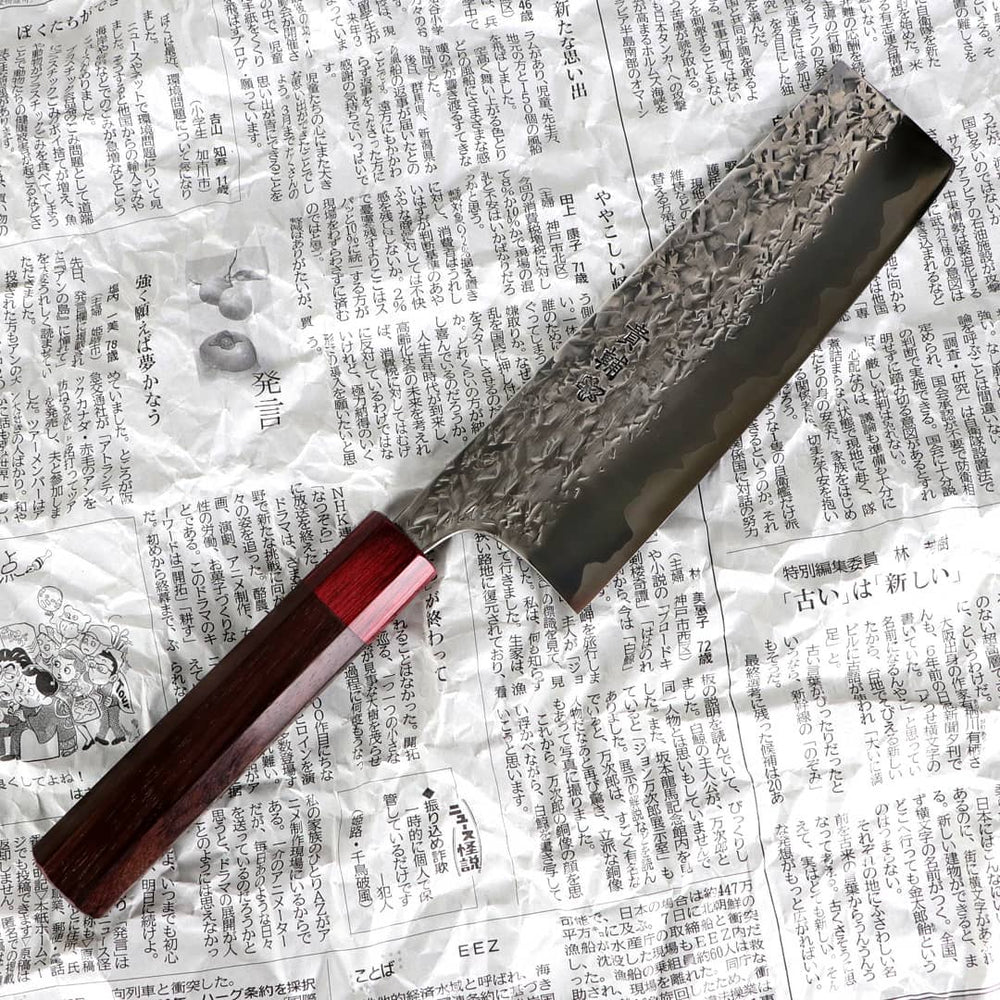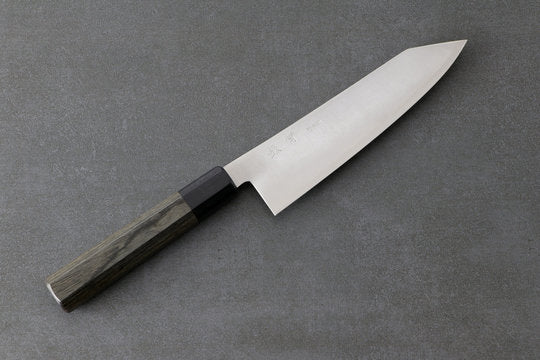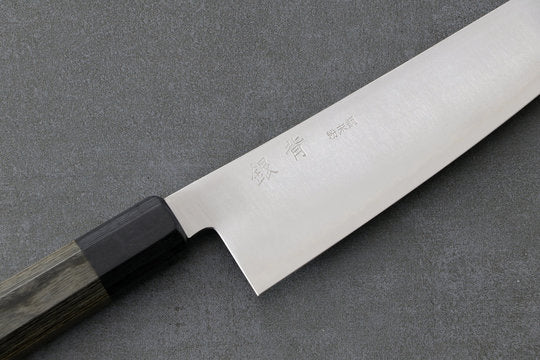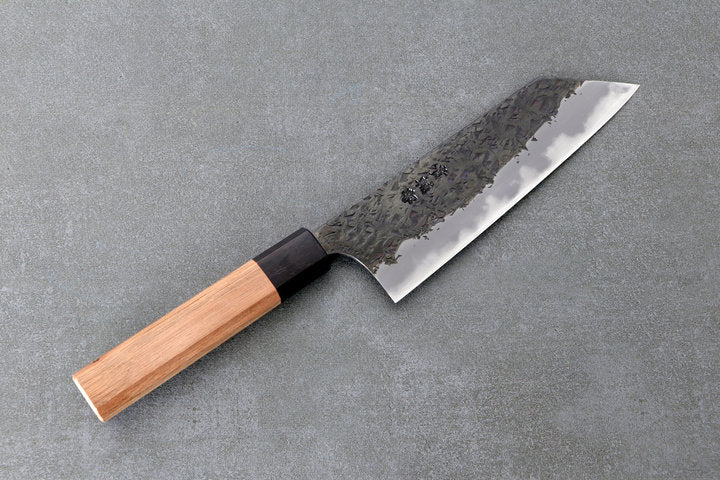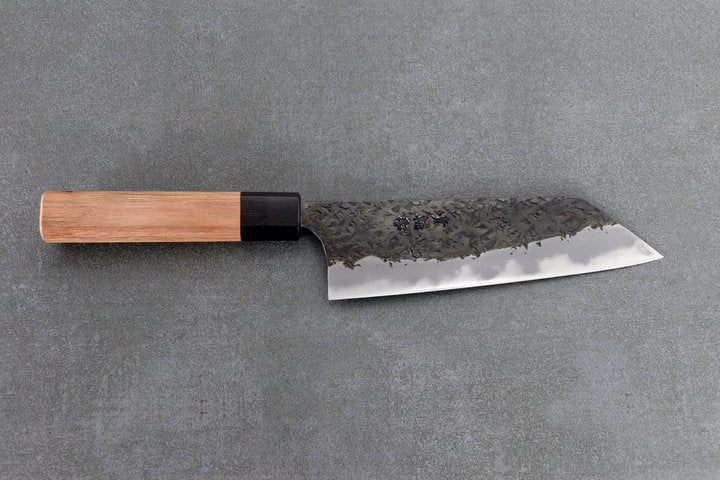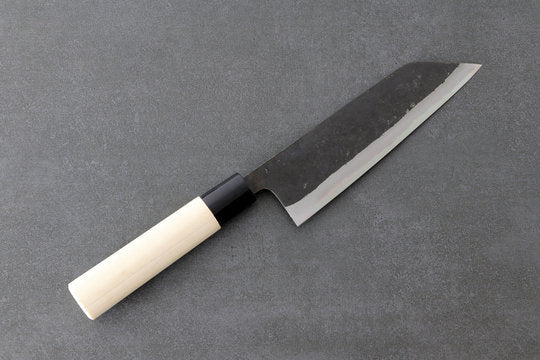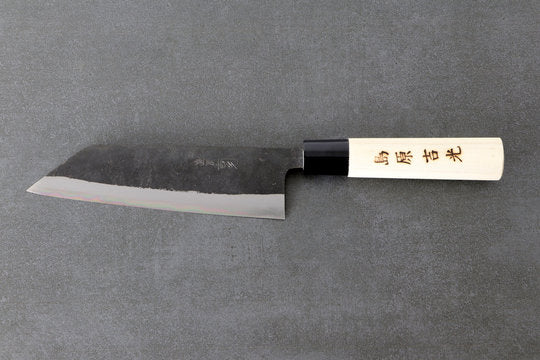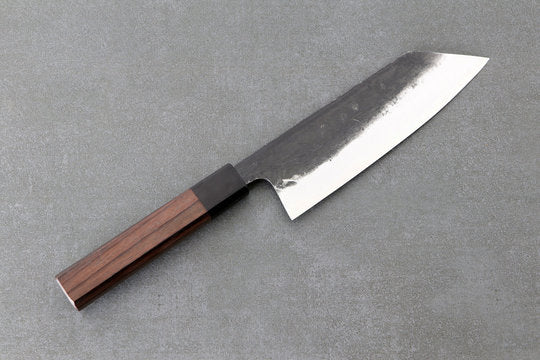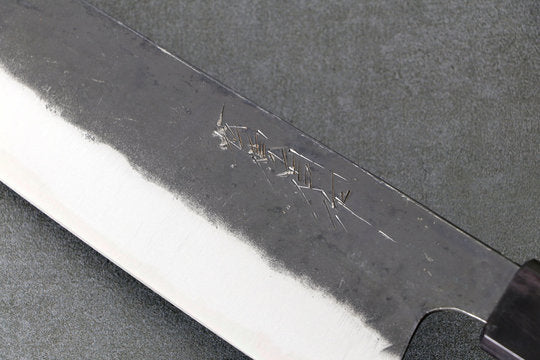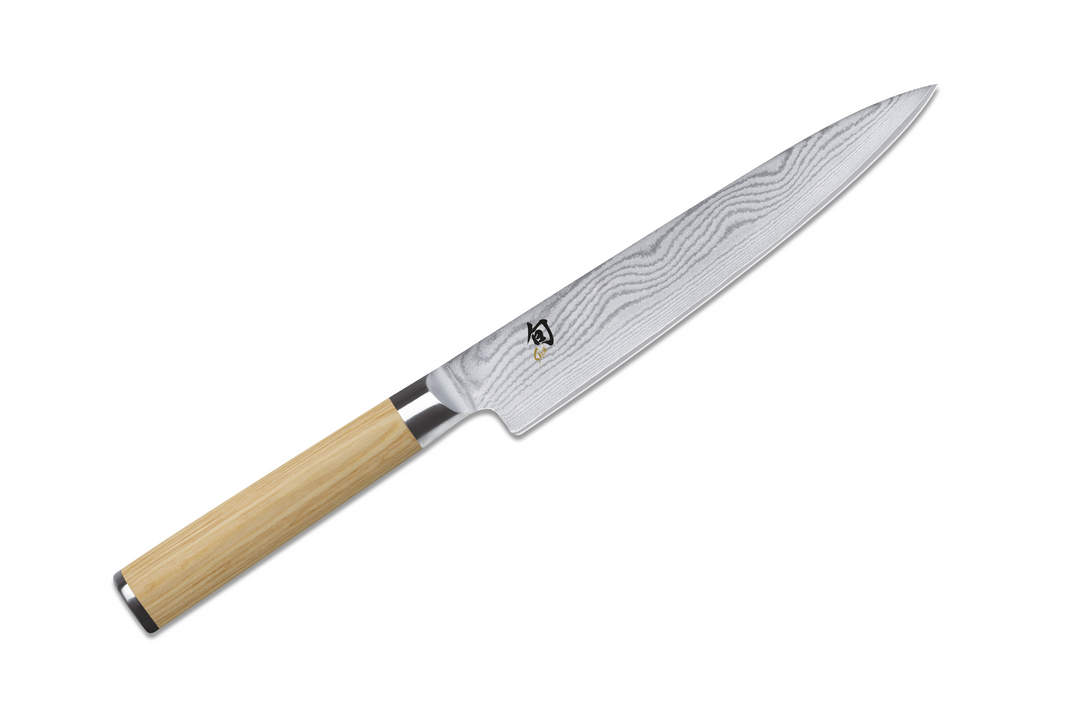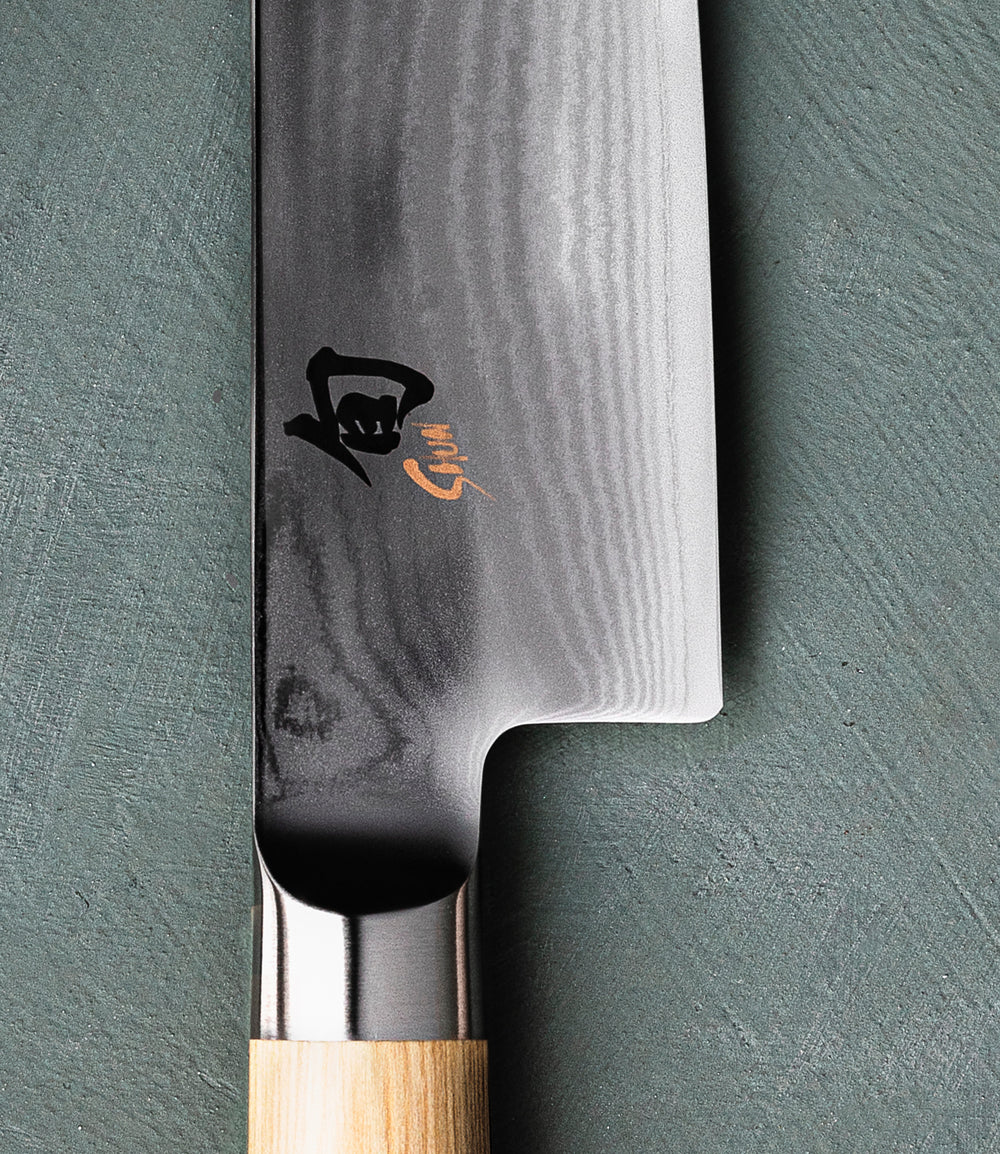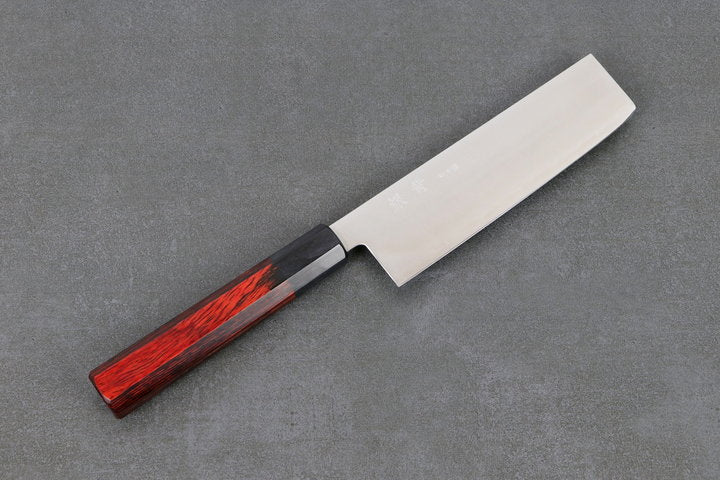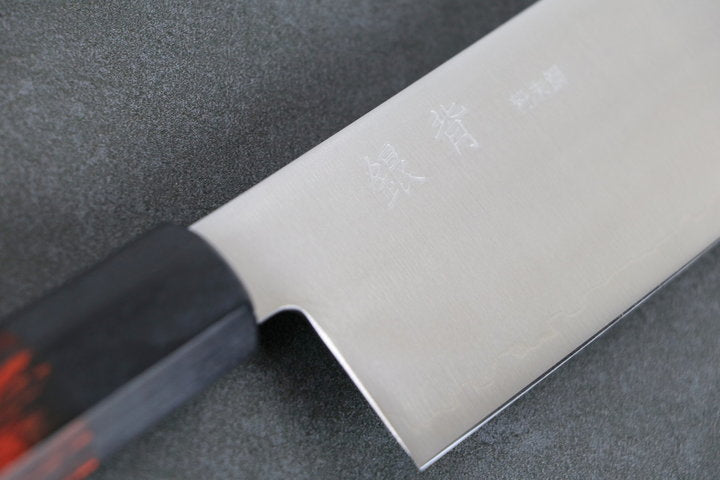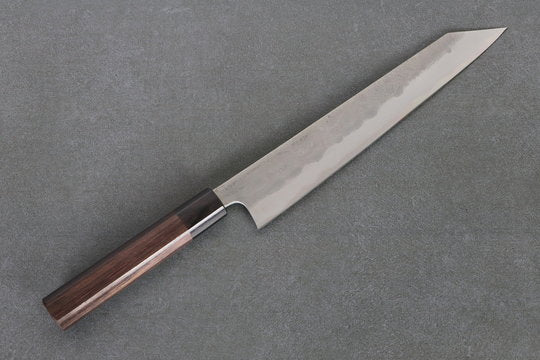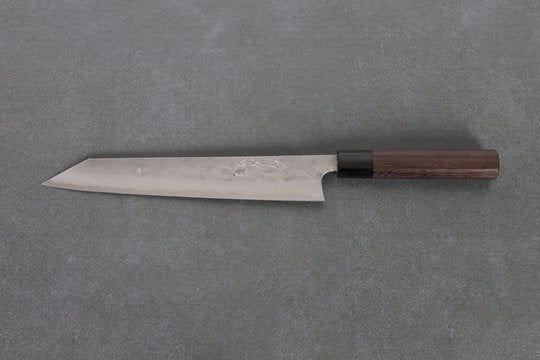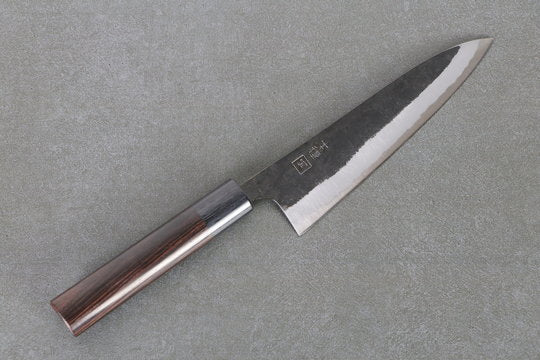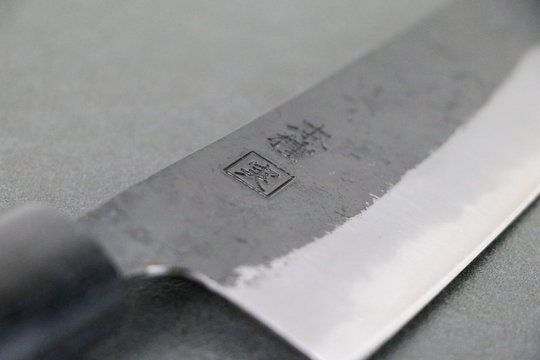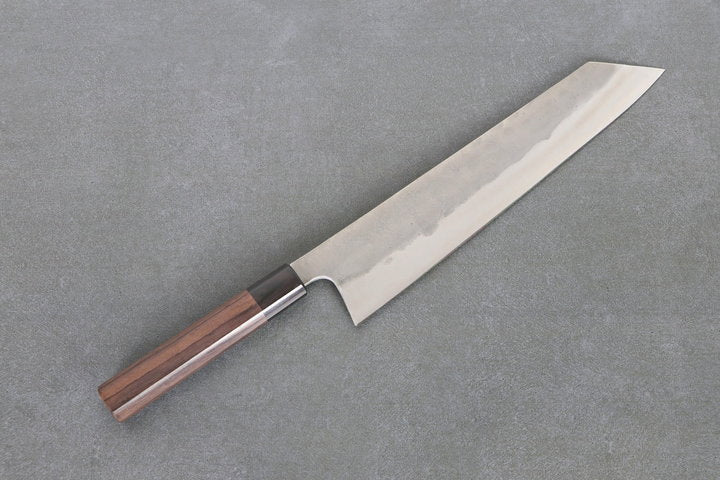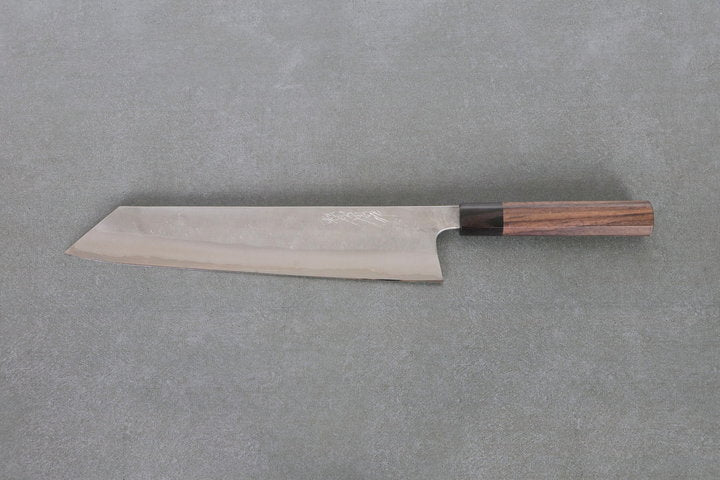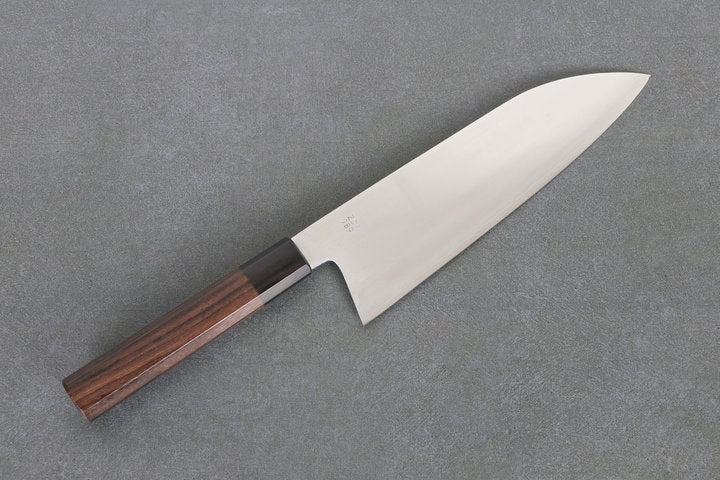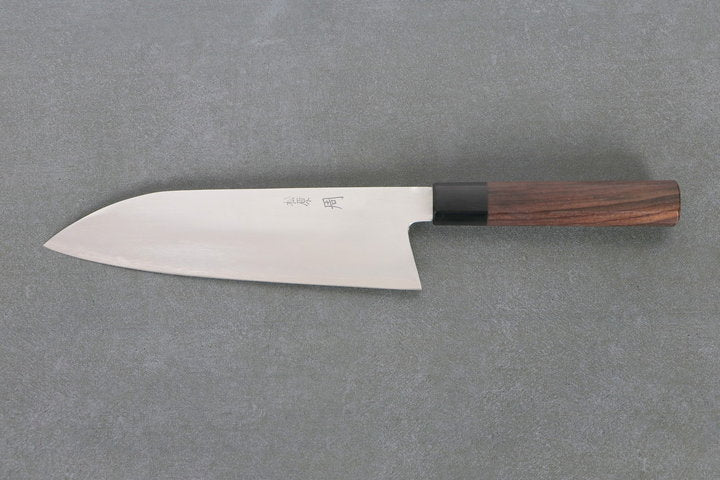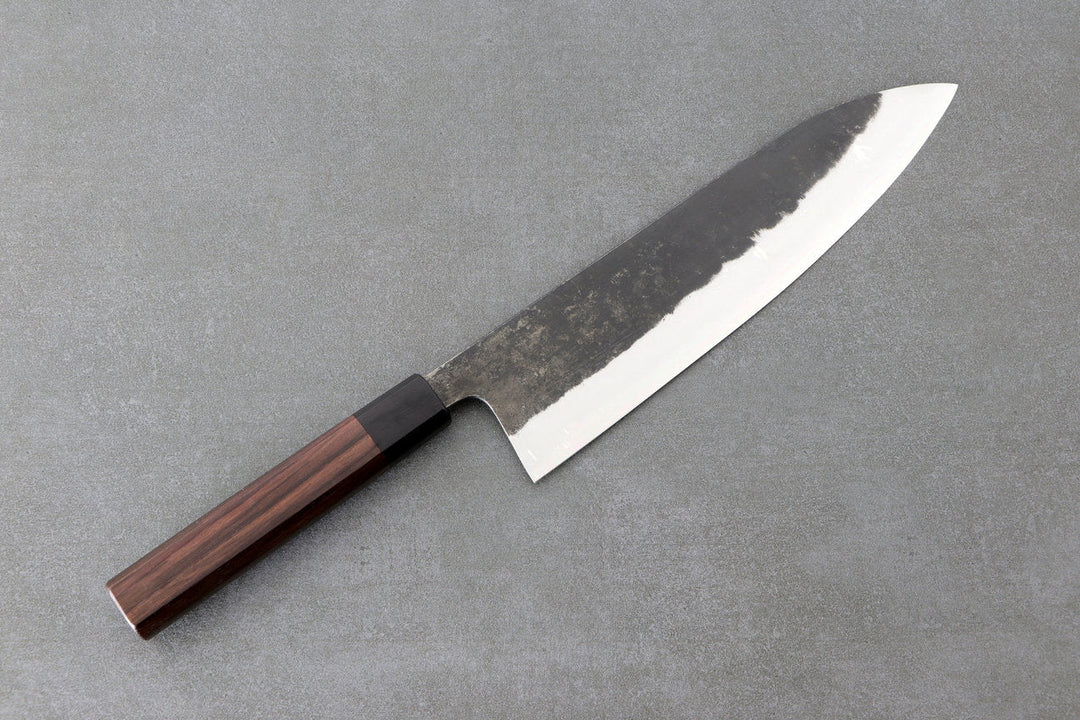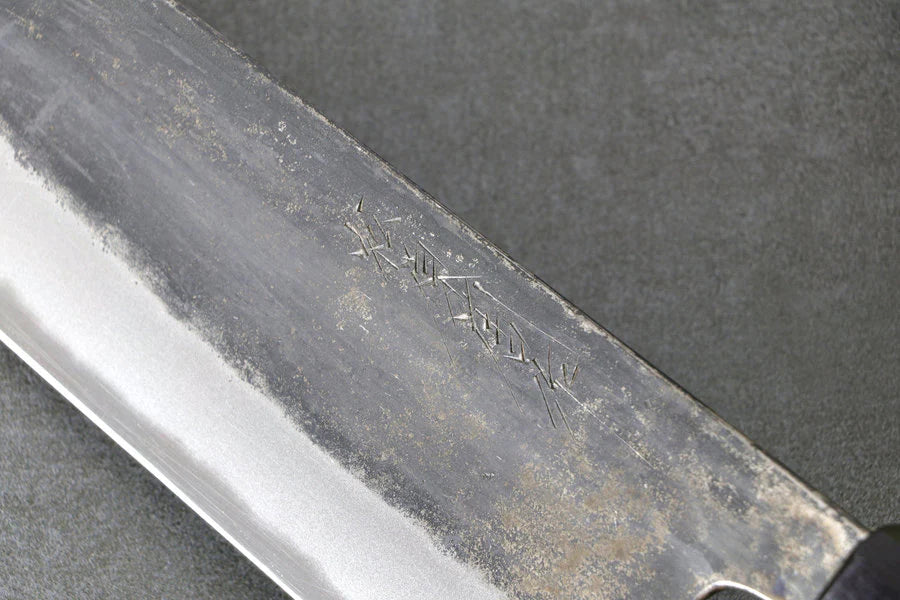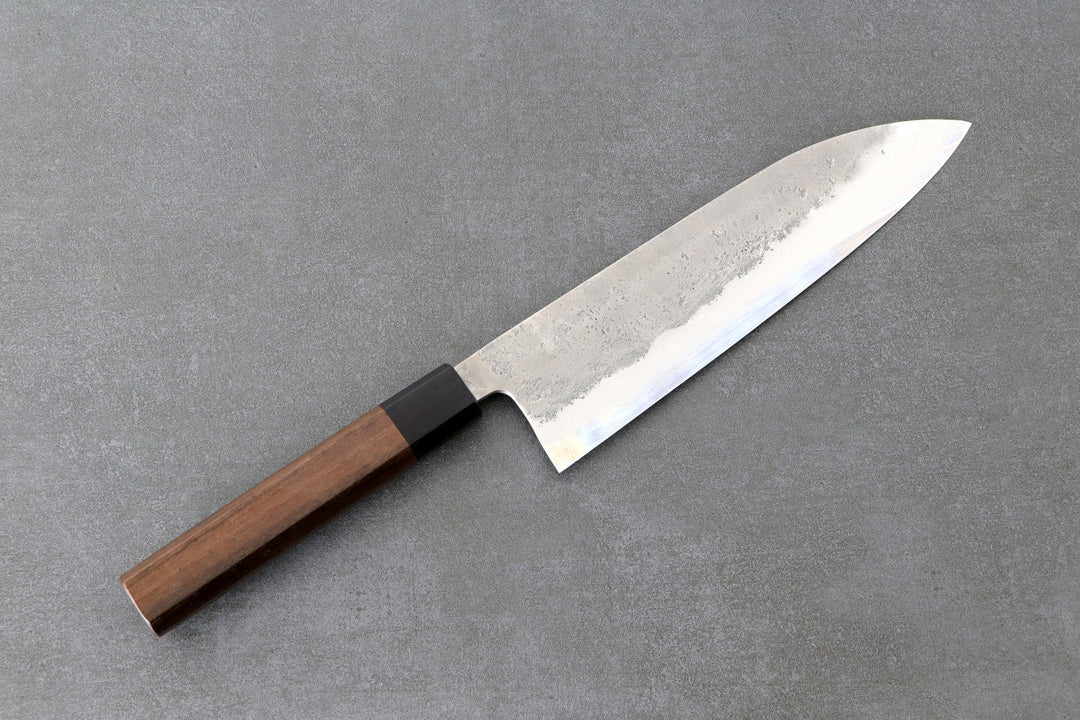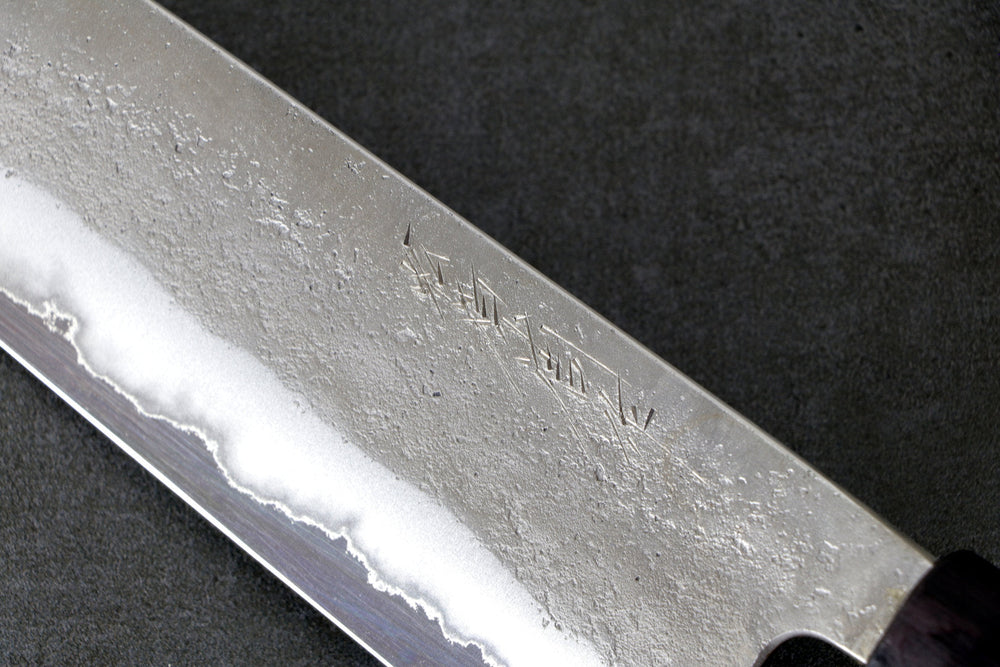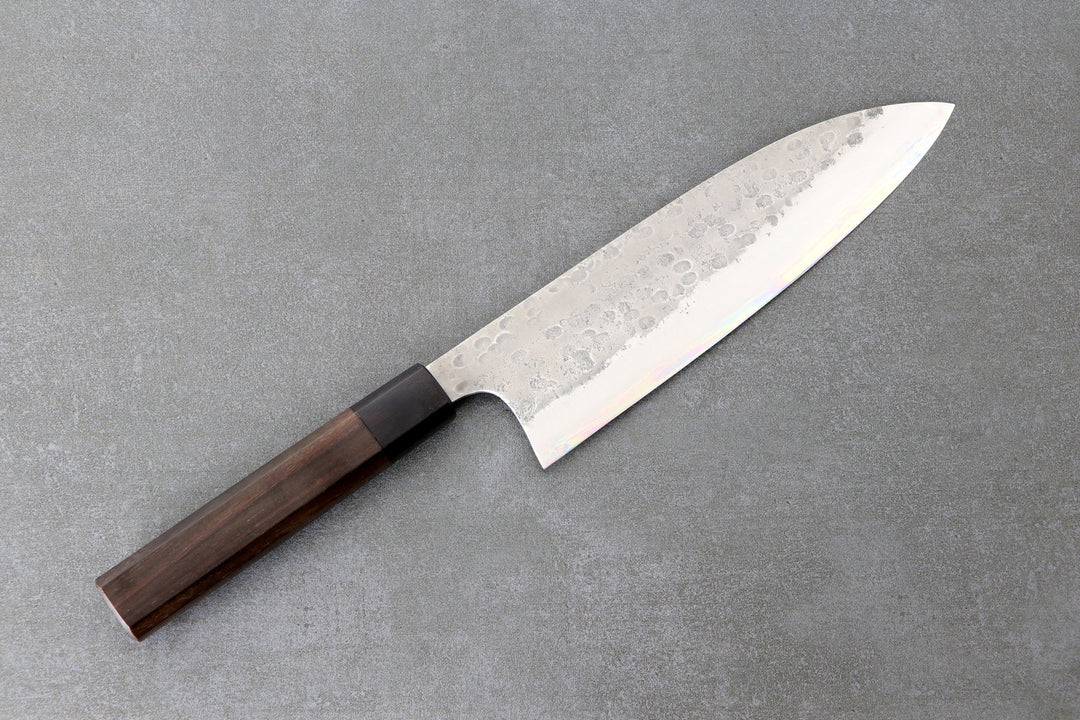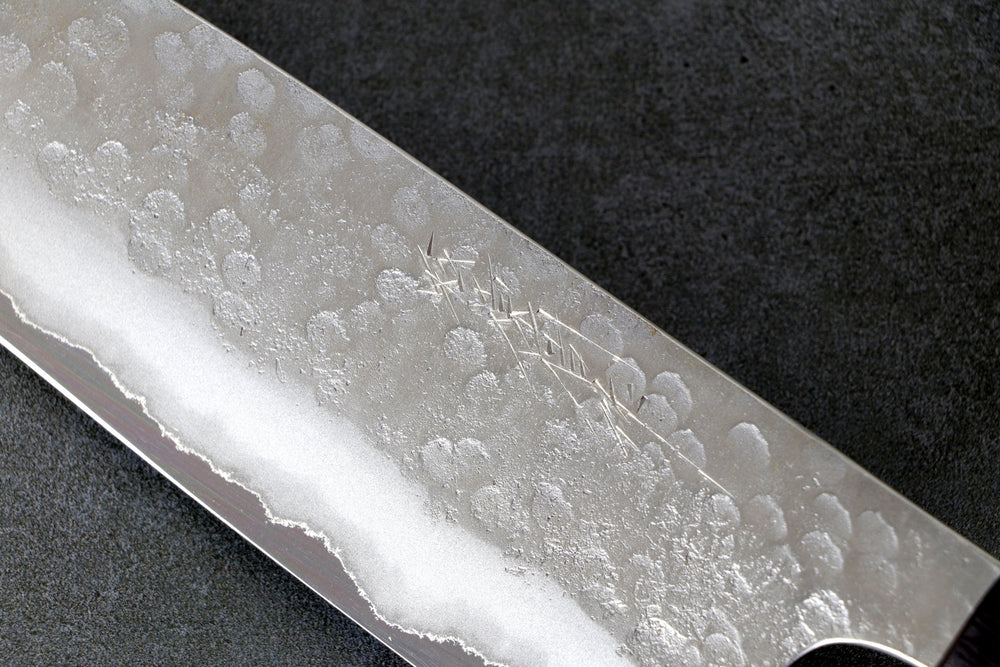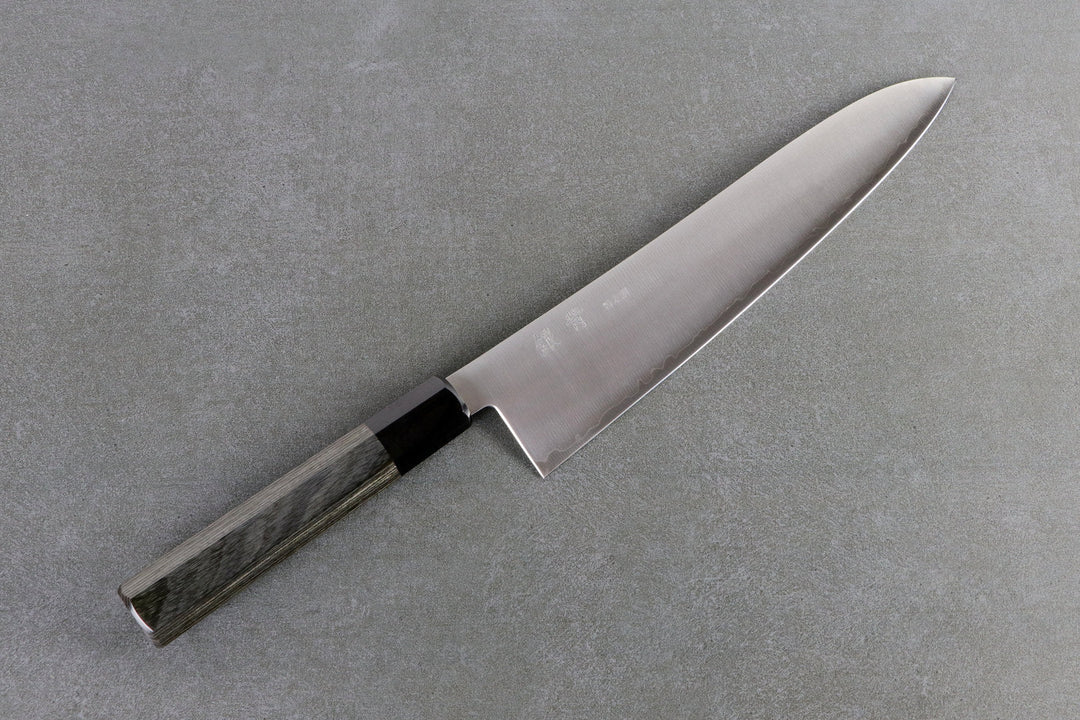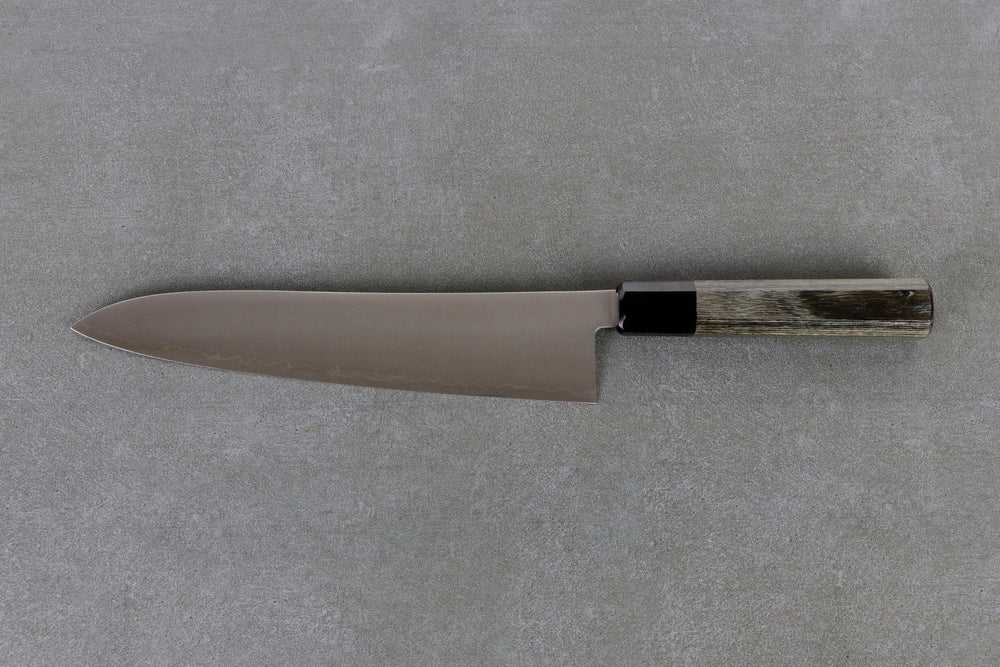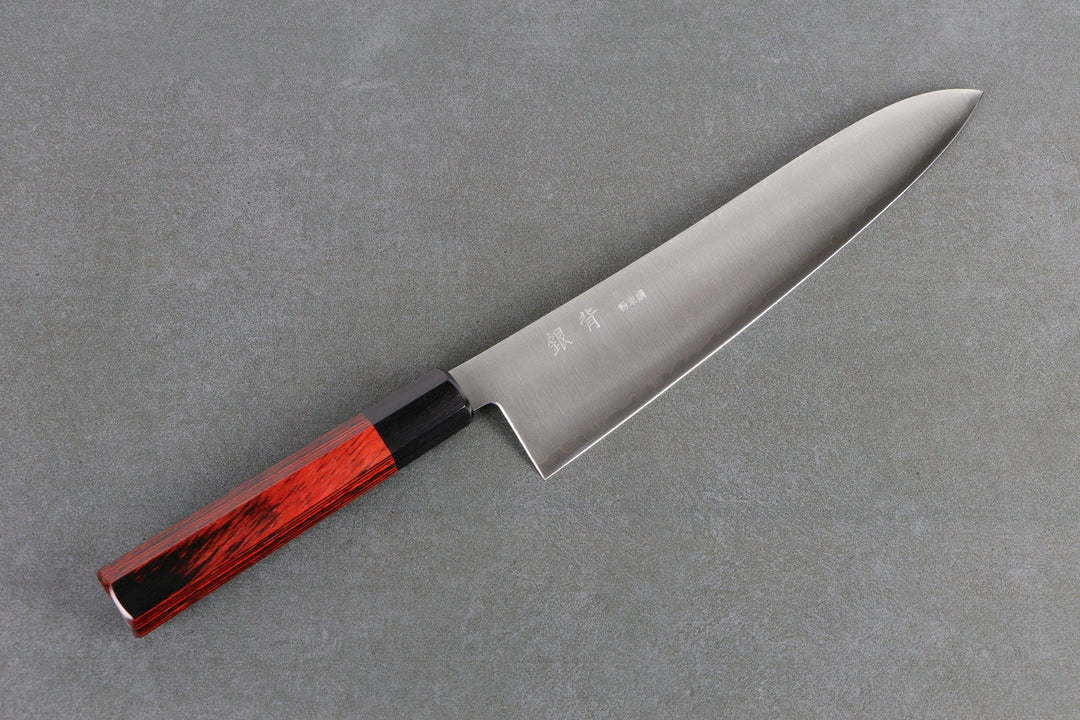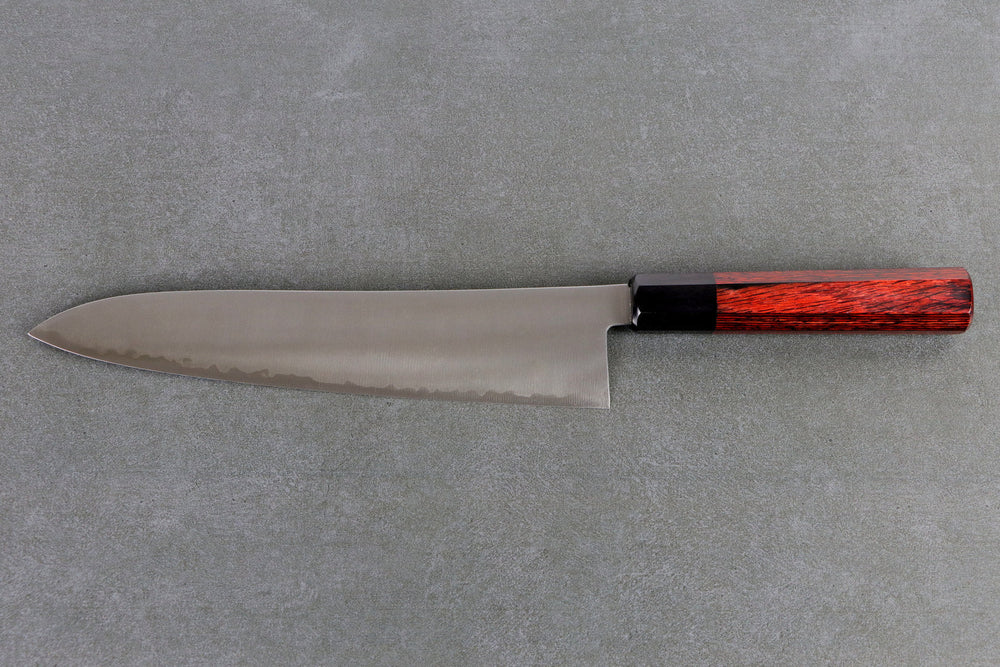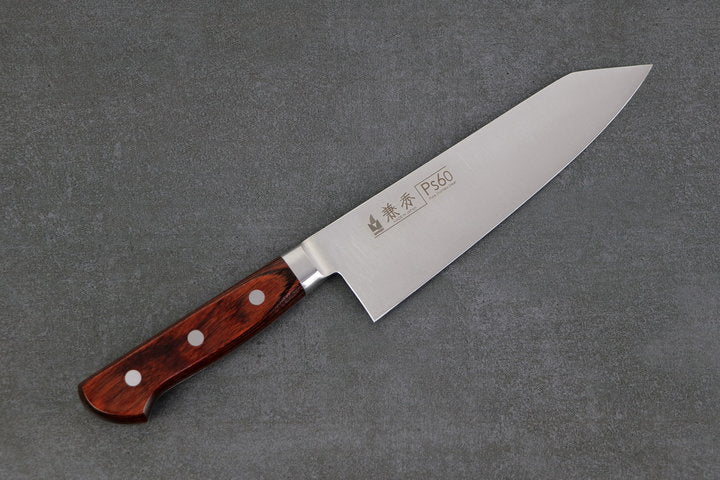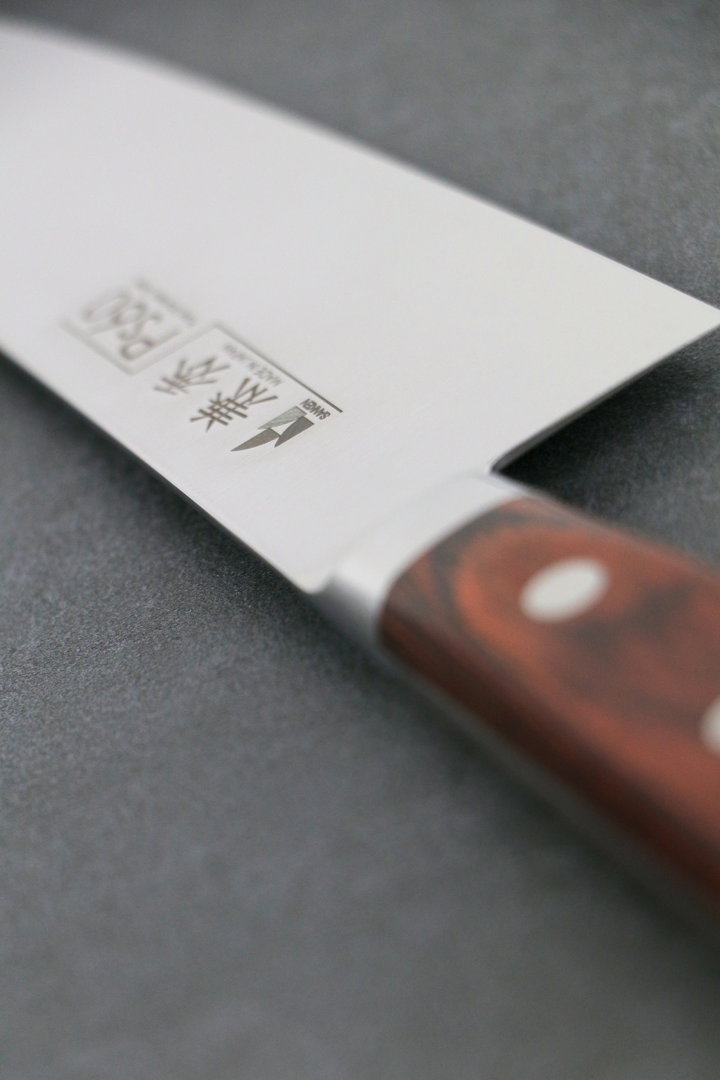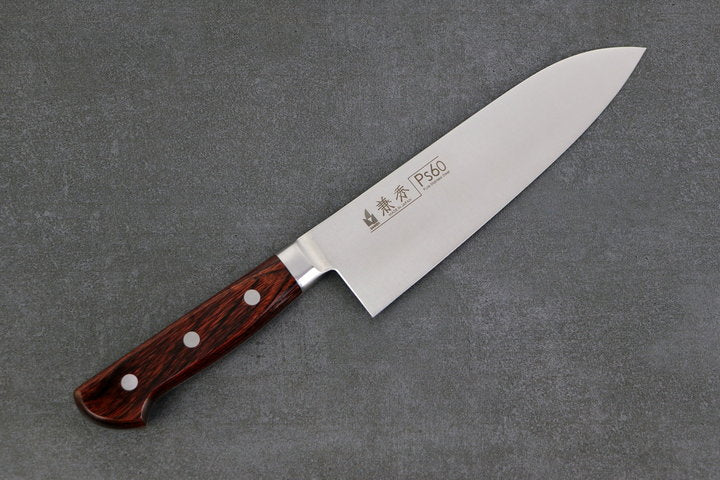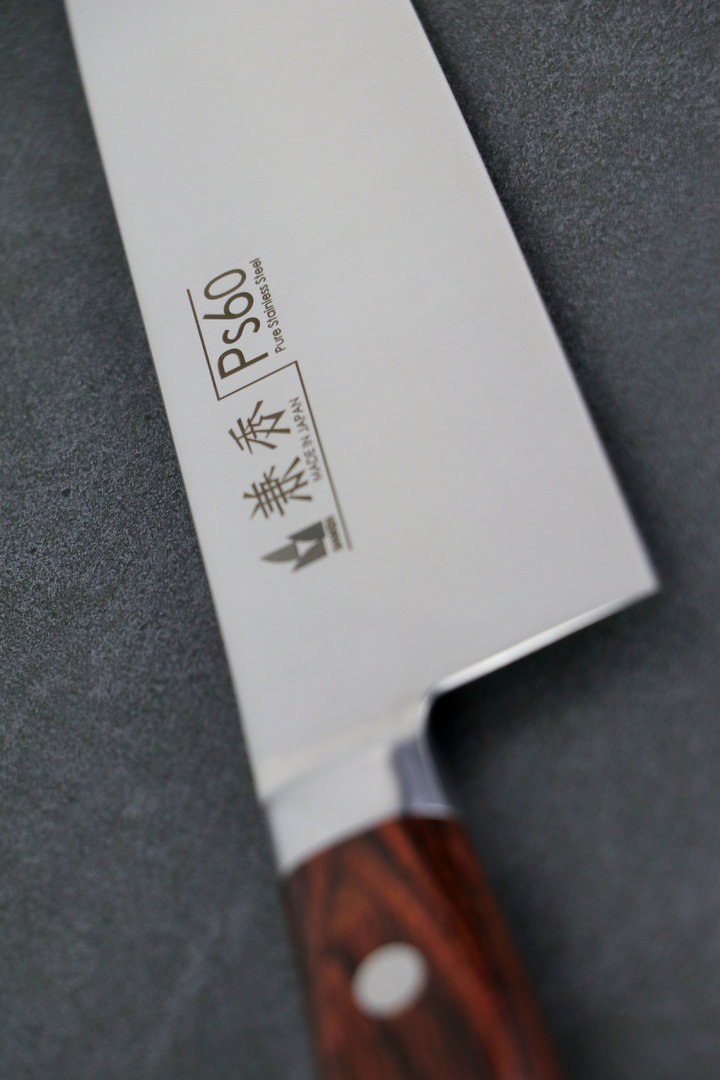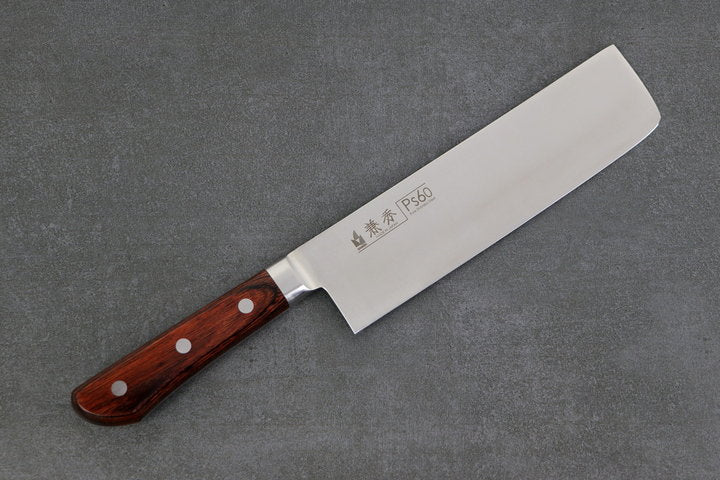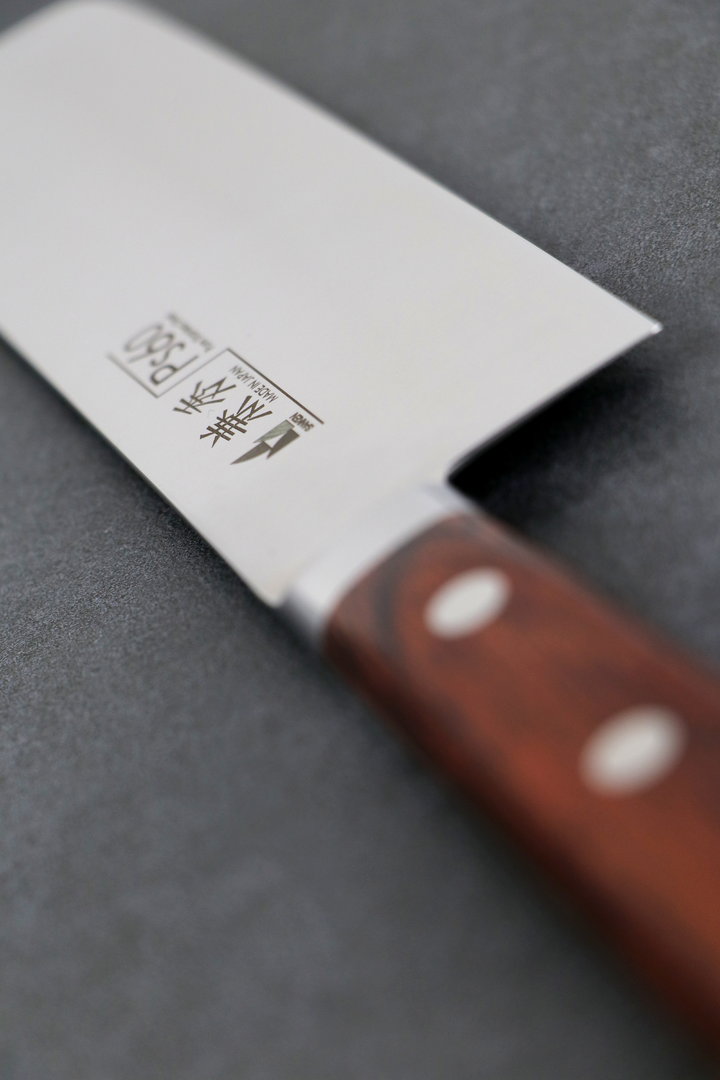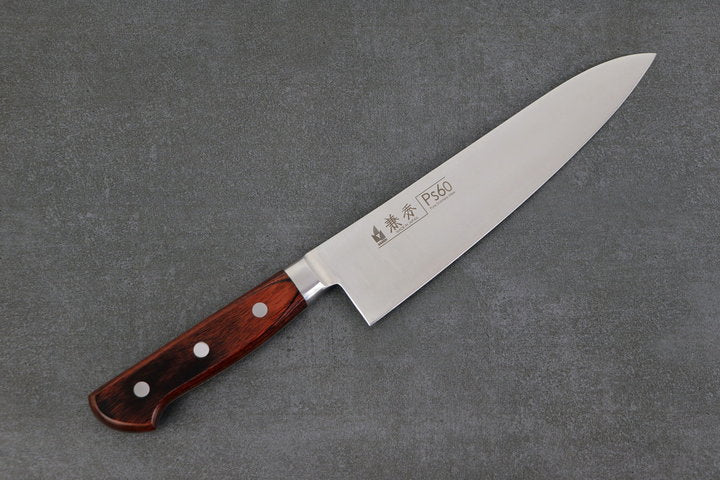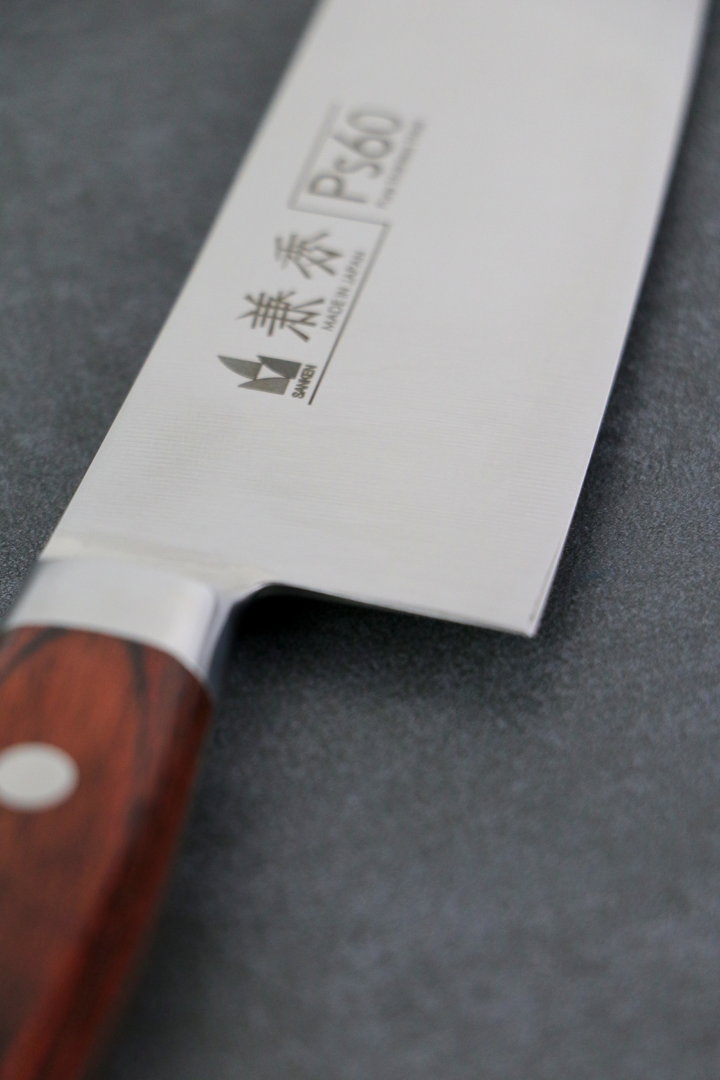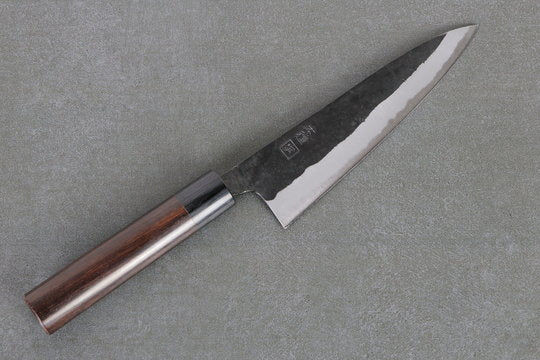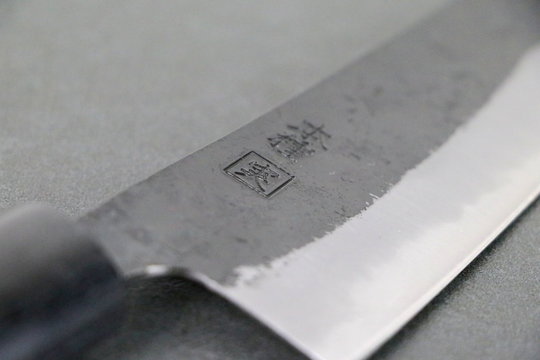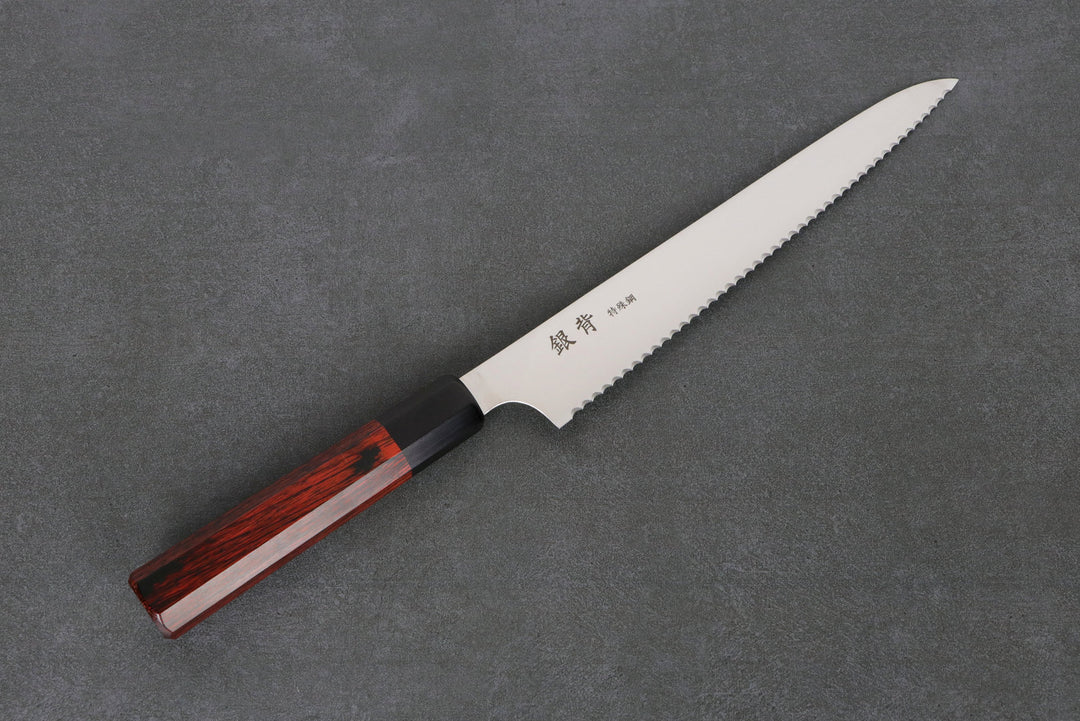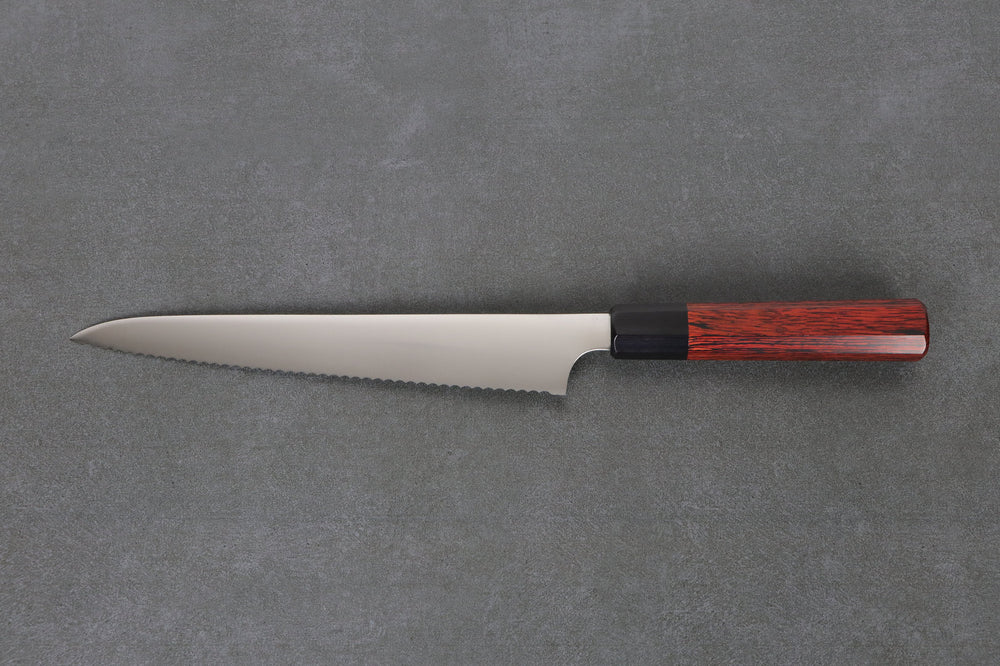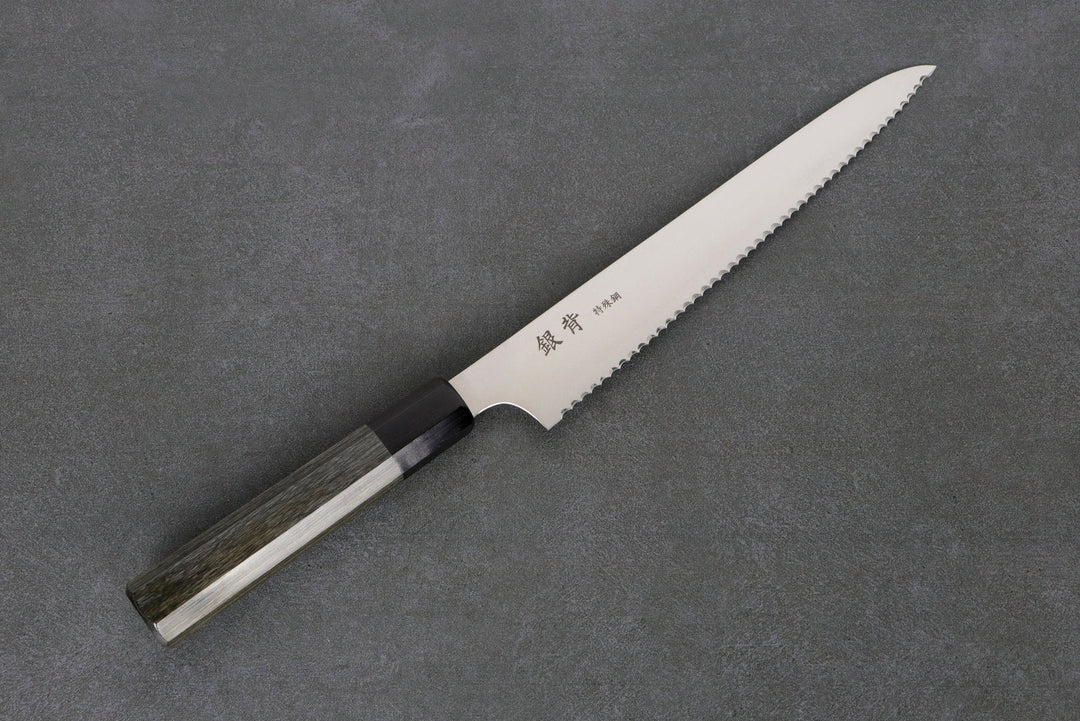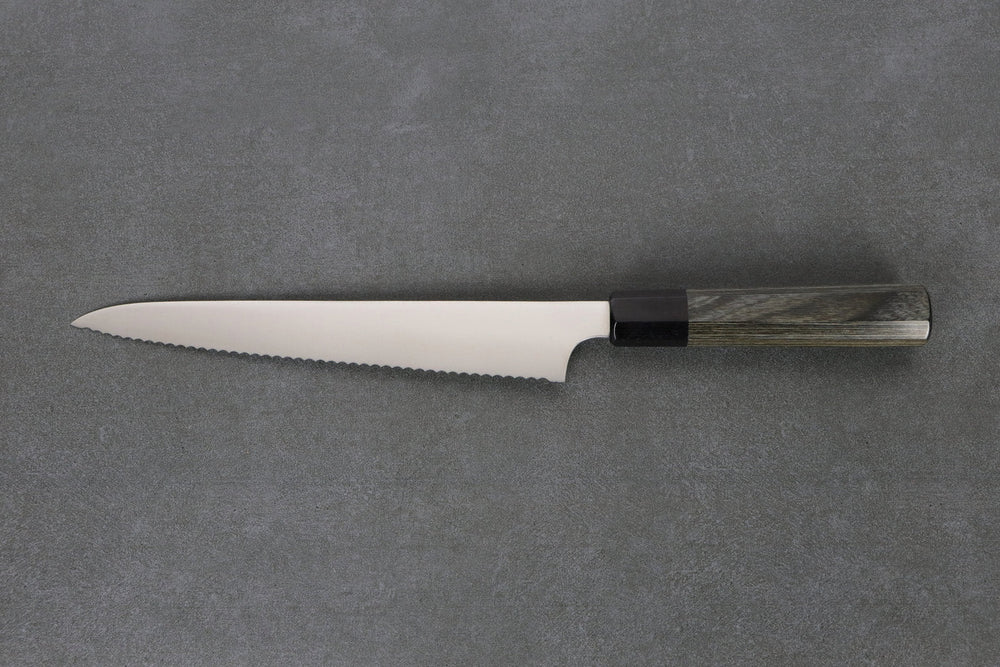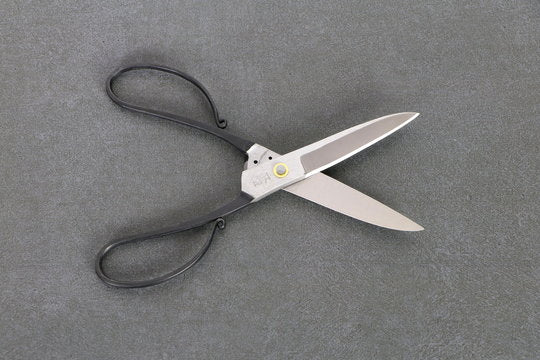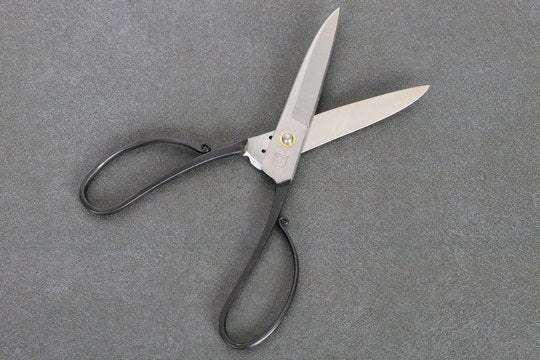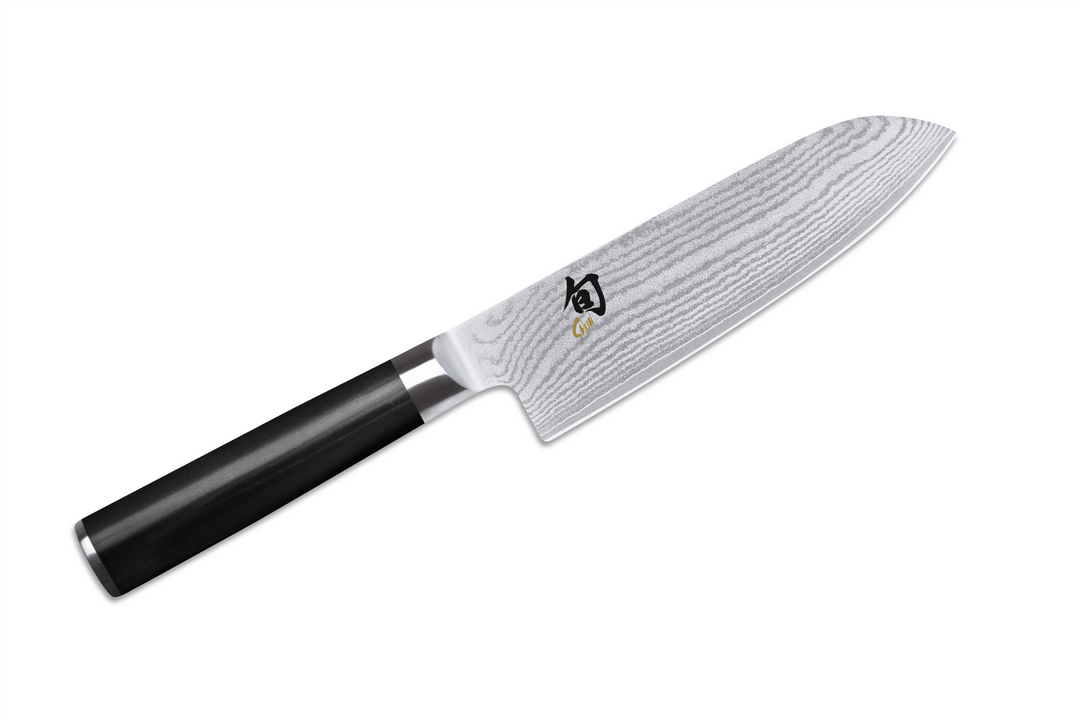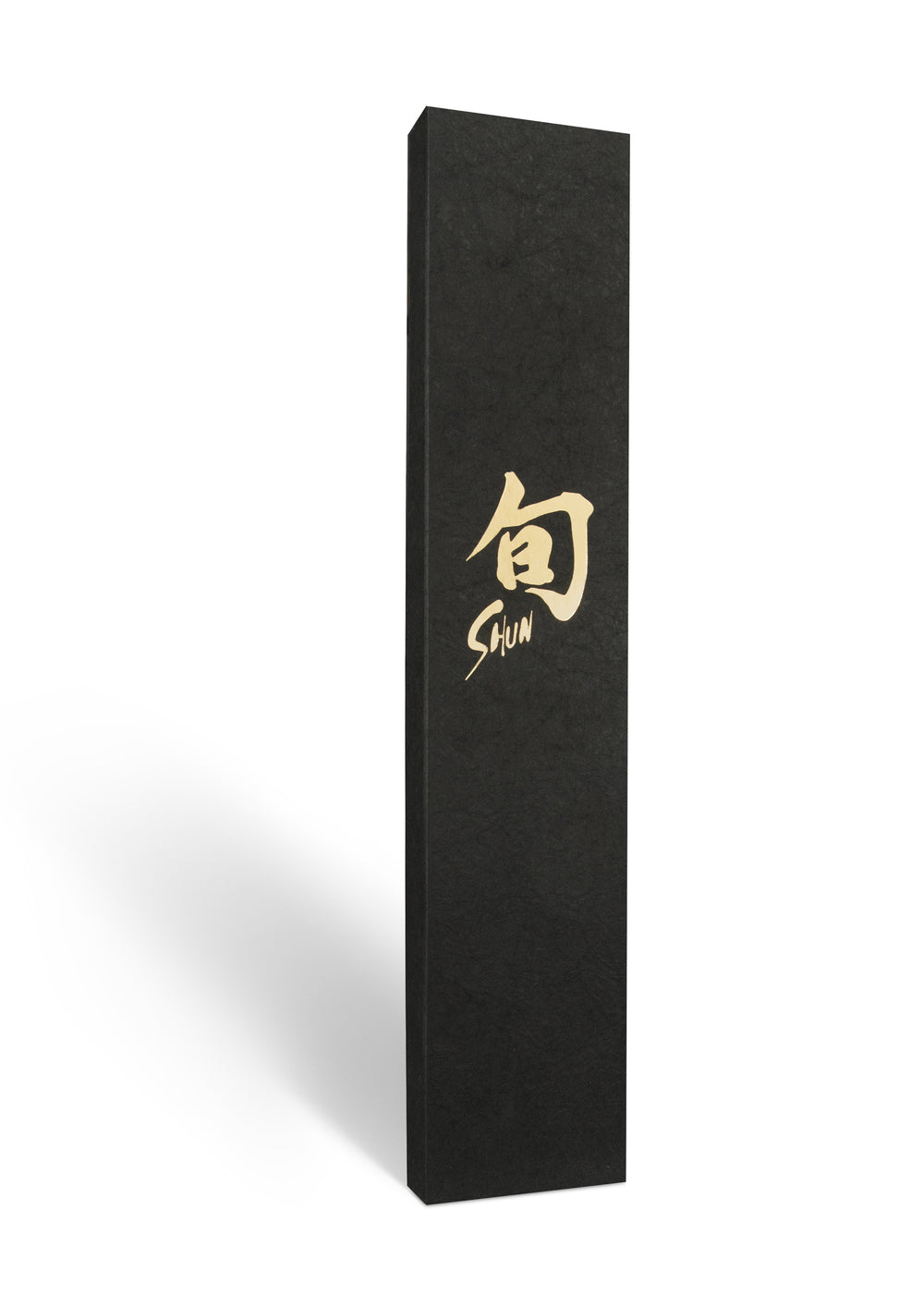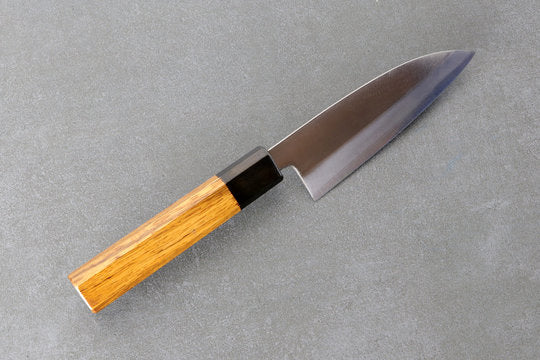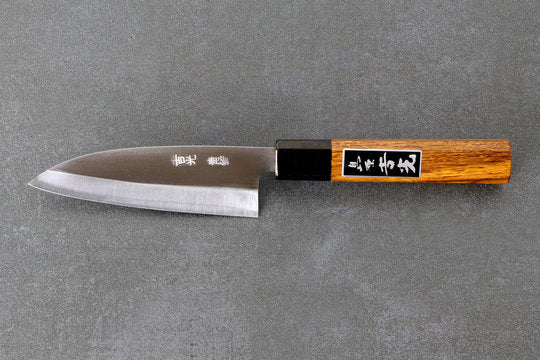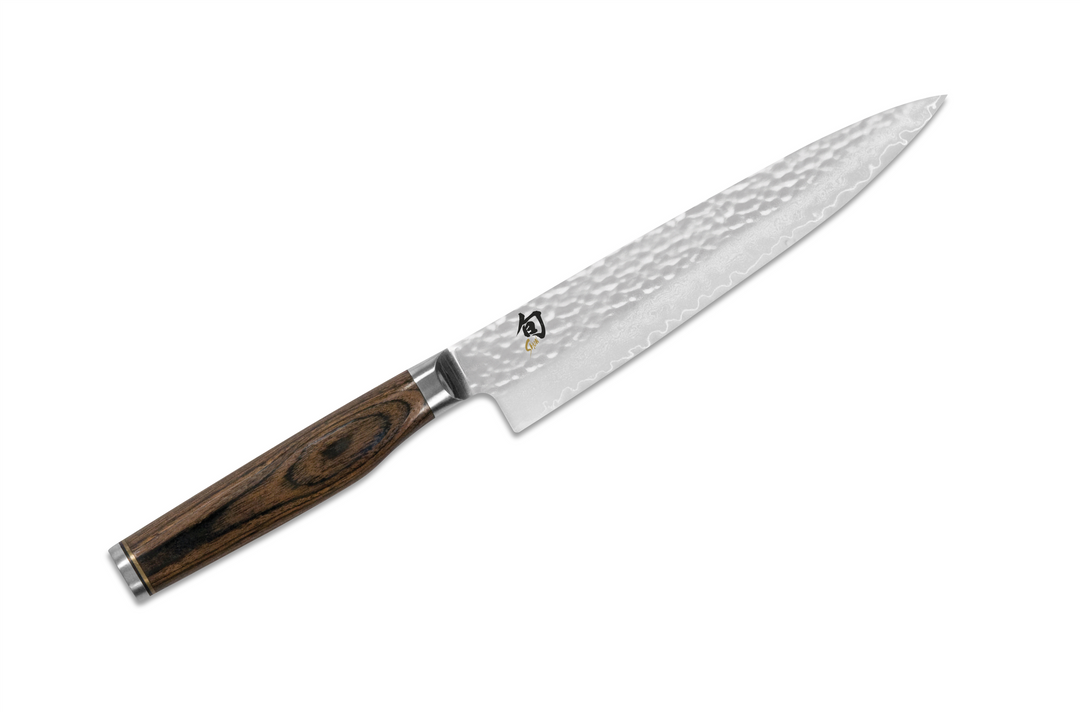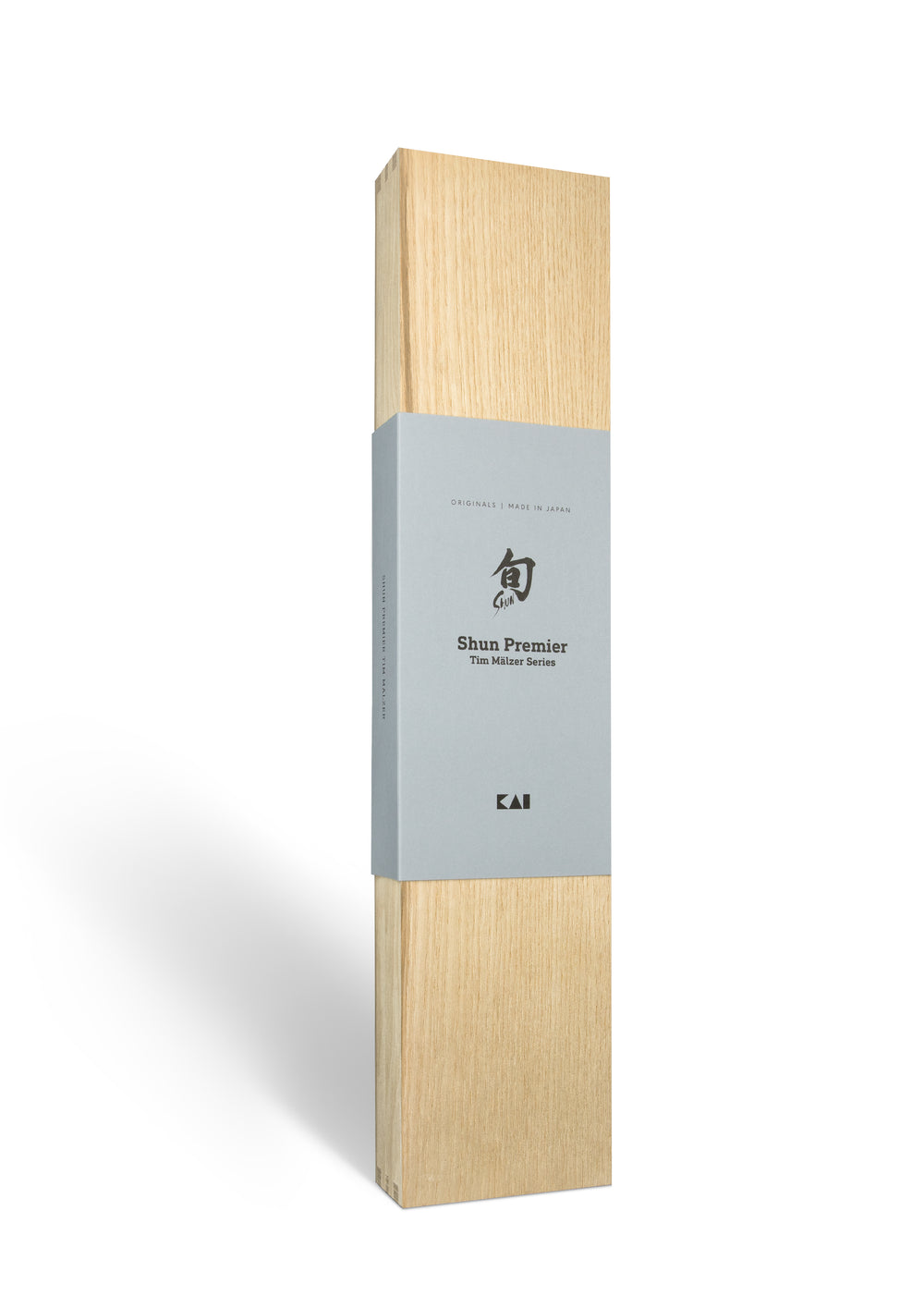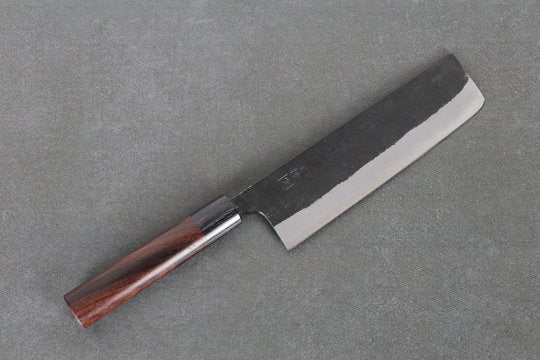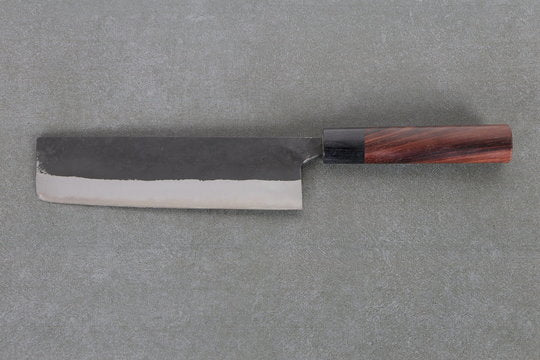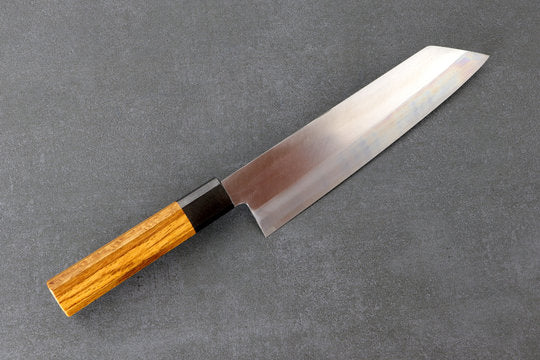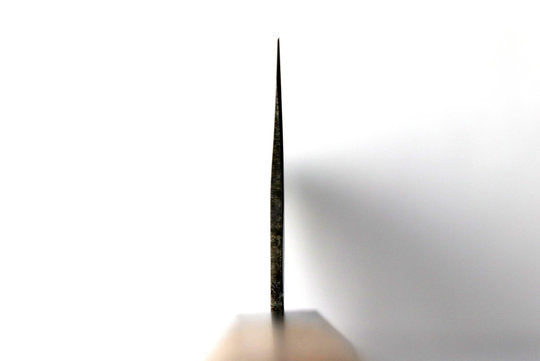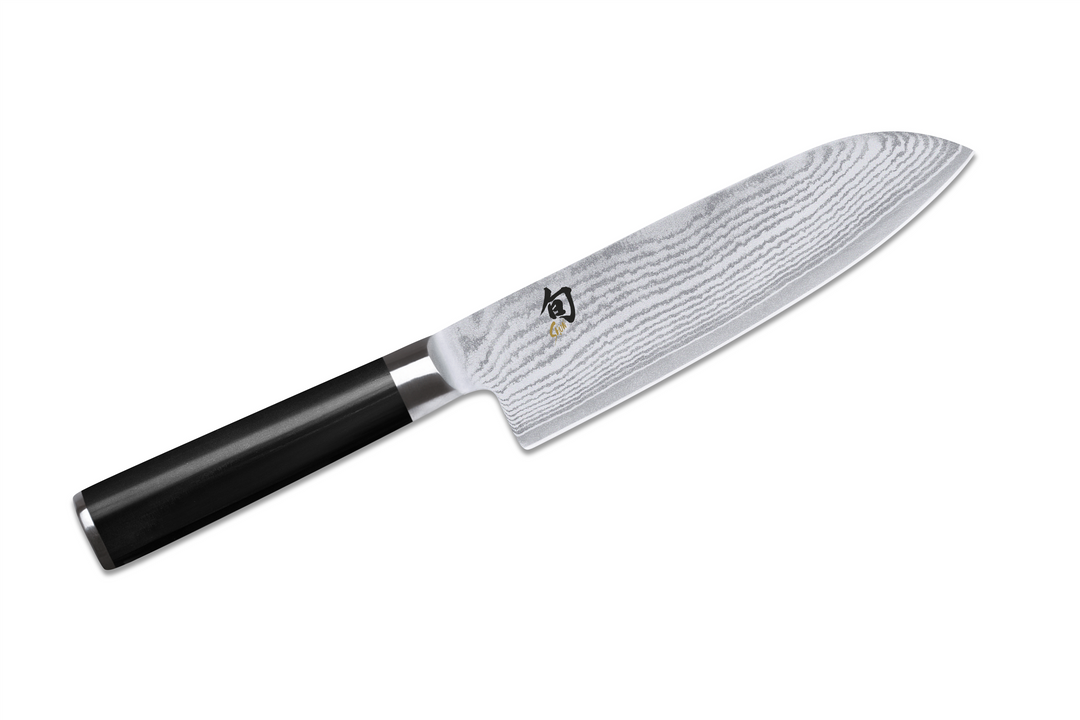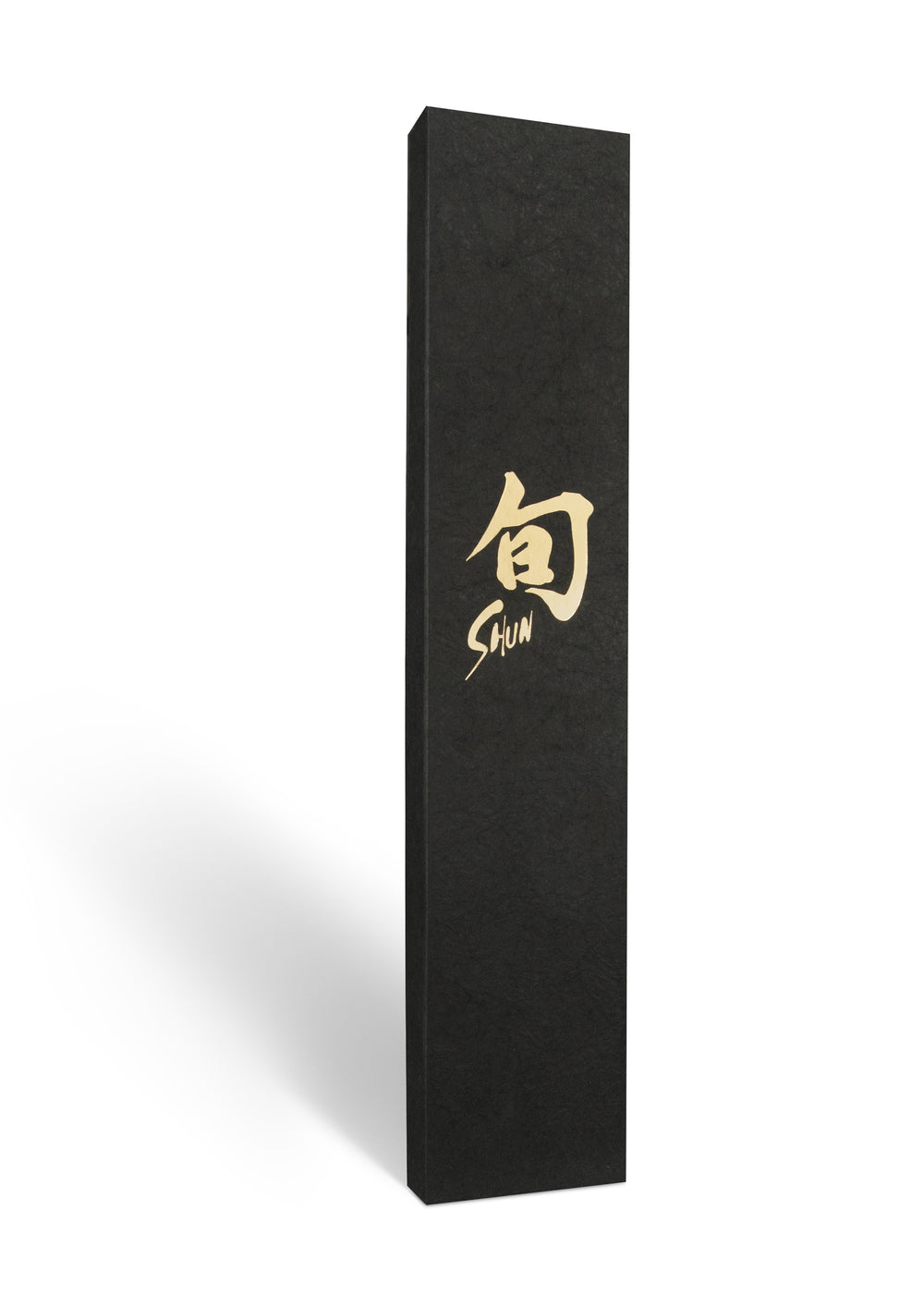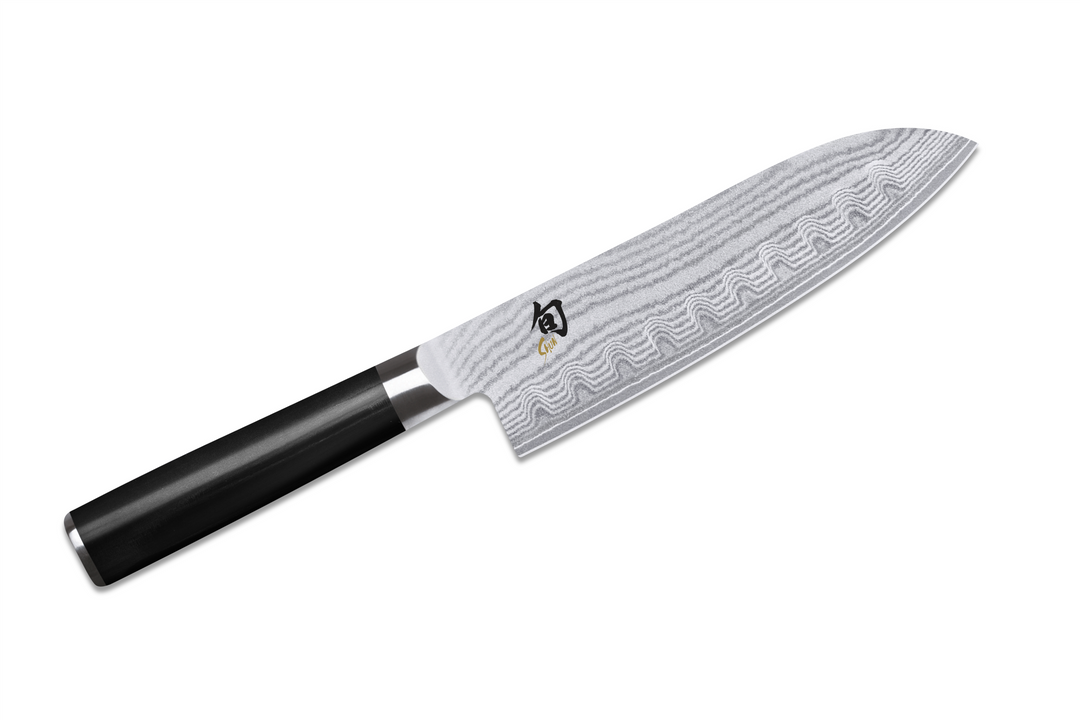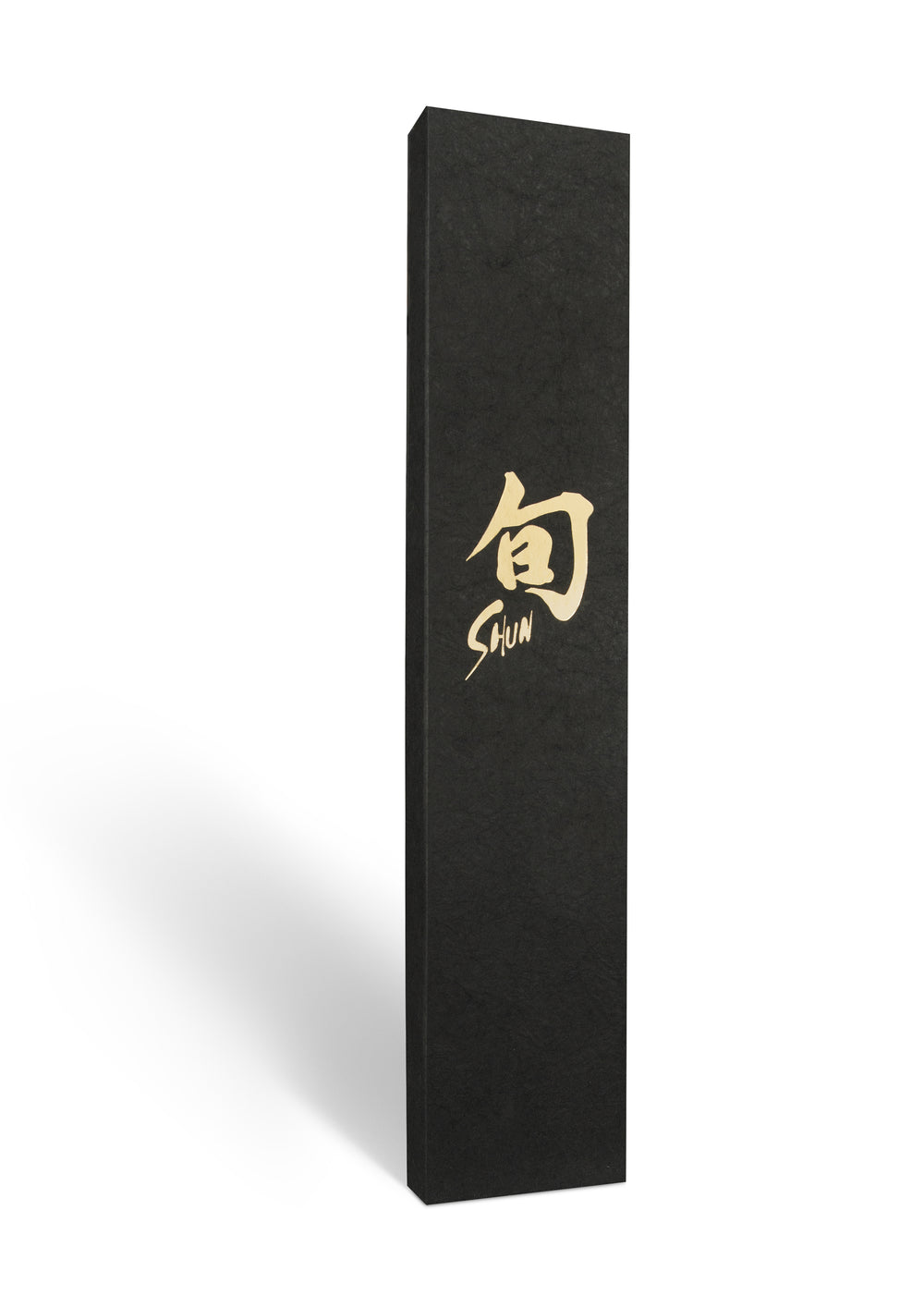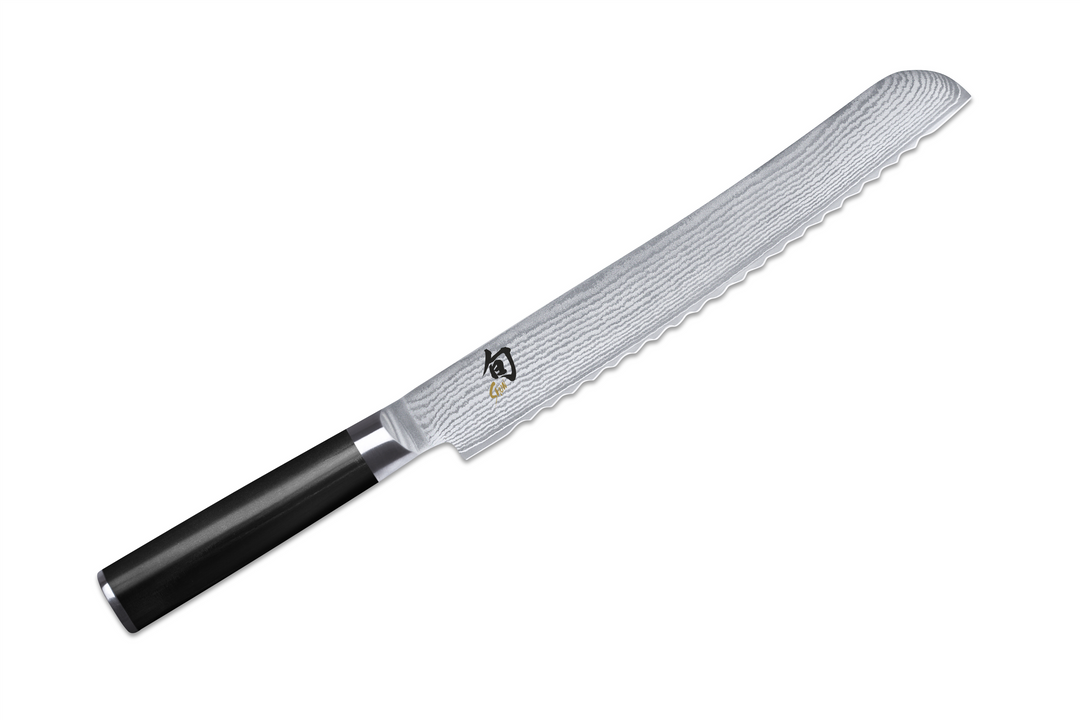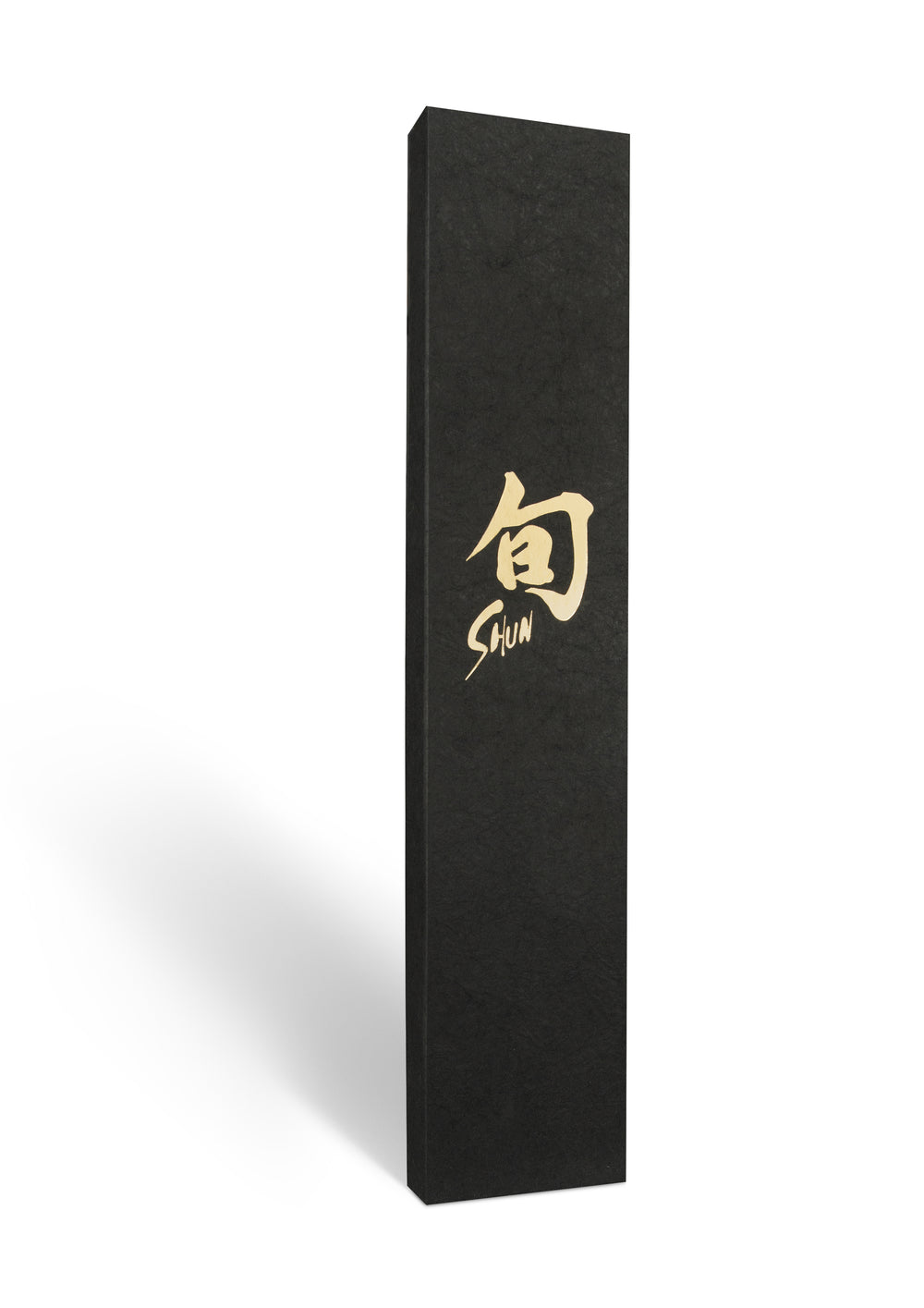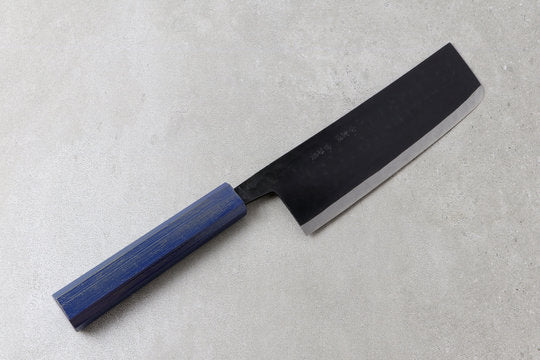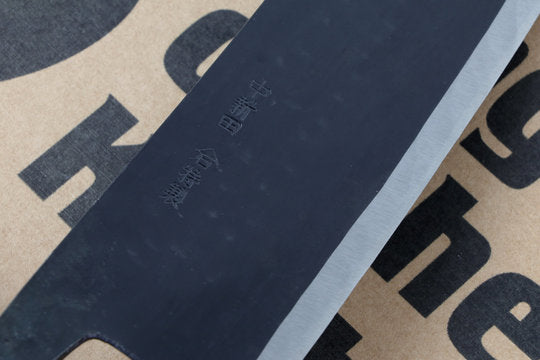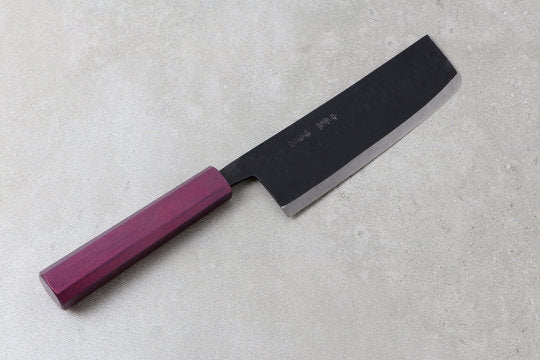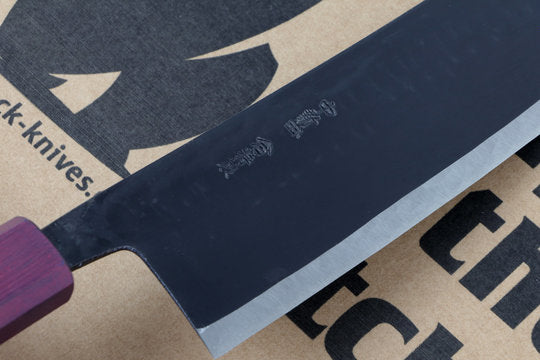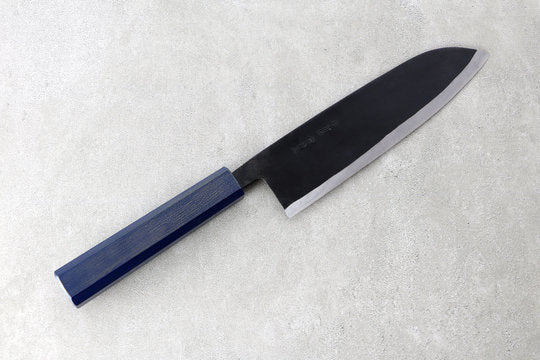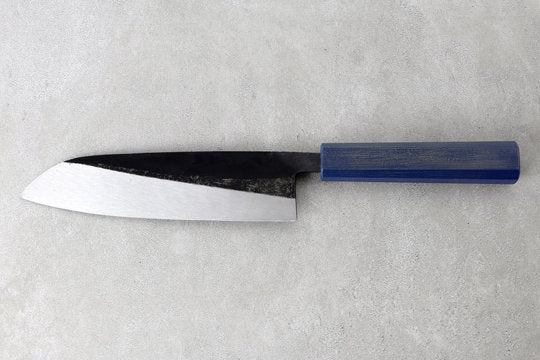WHICH TYPES OF JAPANESE KNIVES ARE SUITABLE FOR WHICH WORK - BLADE SHAPES AND TYPES OF KNIVES
The basic equipment in the kitchen should include a paring knife, a meat or fish knife and a small all-purpose knife for peeling fruits and vegetables. This basic equipment is a must for cutting food quickly and effortlessly and can be supplemented with any other types of knives as needed. At Silverback Knives, we offer a few types of knives for different cutting tasks in the kitchen and explain how they differ from other types of knives.
CHEF'S KNIFE - ALL-PURPOSE KNIFE:
This knife is among the most important kitchen equipment and should not be missing in any kitchen. The chef's knife has a high blade with a radius to the tip. Therefore, this type of knife can be used for cutting meat, fish and vegetables. General purpose knives include the gyuto, santoku and bunka.
VEGETABLE KNIFE:
There is no such thing as the classic vegetable knife. All general-purpose knives (gyuto, bunka and santoku) are suitable, but the nakiri knife is a special type. For cutting vegetables, one usually uses knives with a higher blade to be able to cut larger vegetables without problems and at the same time prevent slipping. The size of the knife should always be selected based on the food to be cut.
FISH KNIVES:
All knives for processing fish have a sharp point to be able to open the fish for gutting. Since some fish knives are also used for bone crushing, the Funayuki and Deba have a wide blade back with the necessary stability for preparatory work. The Yanagiba or Sushi knife, on the other hand, is to be used for the finer work such as portioning the fillets. Hybrid knives such as the bunka are also suitable for these cutting tasks, but they cannot fully compensate for the characteristics of the pure fish knives, but they form a solid middle ground.
JAPANESE KNIFE TYPES
The following part introduces types of knives from Japan. Japanese knives are very popular and today there is a wide range of knife shapes. The shape of knives determines their ideal use. Knives for fish and meat can differ in the blade. Similarly, knives for vegetables and fruits sometimes differ greatly from knives for meat and fish.
Japanese knife types overview
- Santoku knife: all-purpose knife, suitable for meat, fish, vegetables and fruit
- Gyuto knife: all-purpose cooking knife, suitable for meat, fish, vegetables and fruit
- Bunka knife: all-purpose knife, suitable for cutting fish, meat, vegetables and fruit
- Nakiri knife: double-edged knife for cutting vegetables and fruits
- Usuba knife: single-edged vegetable knife
- Deba knife: single-edged knife ideal for cutting fish
- Funayuki knife: ground on both sides for fish and meat
- Yanagiba: single-edged for fish and precise cuts with this blade
- Sujihiki: Variation of the sushi knife for meat. Blades ground on both sides
- Honesuki: Traditionally used as a boning knife for tendons and small bones
- Petty knife: Short blade length. Ideal as a paring knife and counterpart to the office knife
SANTOKU
The Santoku knife is an all-purpose knife and the name Santoku can be translated as "Three Virtues". Meat, fish and vegetables can be processed effortlessly with this knife. Along with the gyuto, it is probably the most famous Japanese kitchen knife. Variants range in blade length from 15cm - 18cm. The Santoku knife shape is an all-purpose knife and is one of the most popular types of knives from Japan.
BUNKA
Today, the bunka is also considered an all-purpose kitchen knife and is used for meat, fish and vegetables. Due to the elongated tip shape of the knife, fish can also be gutted and filleted. Typical blade lengths of these knife shapes are 15cm to 18cm. This knife shape is a special Japanese knife type.
GYUTO
The Gyuto is also an all-purpose knife and can be used for various cutting tasks such as meat, fish, fruit and vegetables. The tip of the gyuto makes precise cuts as well as coarser preparation work possible. In knifemaking, this type of knife is called the counterpart of the chef's knife. You can find these kitchen knives in many professional kitchens. Next to the santoku, this type of knife is most commonly found in our country when it comes to Japanese knives.
FUNAYUKI
This type of Japanese knife was originally created for the activities of fishermen on fishing boats. Today, depending on the blacksmith, there are various variations that have made these knives also general-purpose knives. Characteristic is the short wide blade area with long tapered tip. These knives can be ground on one or both sides. Belongs to the types of knives that are rather unknown outside Japan. However, an all-rounder and a fancy addition to the basic equipment.
HONESUKI
This Japanese knife version of the boning knife has a wider blade for more stability. It was previously used mostly for boning smaller animals such as poultry and can thus also cut small bones. Boning knives enjoy great popularity among hunters and butchers. The length of the blade ranges from 12cm to 18cm.
NAKIRI
This classic Japanese knife for vegetables is ground on both sides and allows very precise cutting of vegetables. The single-edged version of the Nakiri is called Usuba. The high blade is advantageous when preparing more voluminous vegetables and can also be used for chopping herbs. The large blade can also be practical when moving the cut material, similar to a shovel. One of the most famous types of knives from Japan.
USUBA
Belongs to the types of knives specifically for fruits and vegetables. The shape of the knife and blade length is like the nakiri. The difference is the blade, which is ground on one side. The grind allows the cut material to be cut even finer.
Petty Knives
Petty knife shapes are often clearly recognizable. They are considered the office knife counterpart from Japan. In addition to being used as vegetable knives, they can also handle small portions of fish and meat. The blade length starts at 8 cm and usually blade lengths up to 15 cm are normal. The grind is on both sides and the light weight makes this type of knife very agile. Therefore, such a petty knife or paring knife is often found in the knife block. This blade can also be used for tasks as a small boning knife.
Western knife shapes overview
- Cooking knife: All-purpose cooking knife. Alternative is the Japanese knife Gyuto. Double edged. Blade length up to 27cm
- Bread knife: serrated blade - grind serves the purpose of cutting hard and smooth food. Blade length up to 30 cm.
- Office knife: Small all-purpose knife. Similar to the petty knife from Japan. Double edged. Blade length typically up to 15 cm.
- Tomato knife: Blade length up to 15 cm and serrated edge for smooth food surfaces, such as tomato skin.
- Ham knife: blade length up to 24 cm for cutting meat. The Japanese knife Sujihiki is very similar to the ham knife. Double sided grind
- Cheese knife: The one cheese knife does not exist. Depending on the hardness of the cheese, the shape of the blade and blade length of the knife varies
Chef's knife
The classic chef's knife is one of the best known types of knives in Europe. This type of knife can be used as a kitchen knife for vegetables, fish and other foods. The blades are similar in shape to the gyuto. From the santoku it differs significantly. Blade lengths from 15 cm - 24 cm serve almost every purpose in the kitchen. A blade length longer than 24 cm should only be considered for experienced cooks. Other types of knives or special shapes such as the lard knife complement the knife block.
Many manufacturers offer these knife shapes. Due to the profile of the blade, it can partially replace some special knife shapes. However, there are, for example, many Japanese knife types for a specific purpose and here the chef's knife can not keep up.
Bread knife
The bread knife is a MUST in any knife block. Whether the Japanese or Western form of bread knife, it can not be replaced by any other type of knife. Cutting smooth surfaces is only possible to a limited extent for kitchen knives without serrations. For this purpose there are bread knives. A type of knife that belongs in every kitchen along with the gyuto or chef's knife and petty knife or paring knife. There are several types of bread knives. The longer the blade length the better the lifting effect (of course only up to a certain blade length of about 30 cm).
The bread knife can be compared to a saw. This type of knife requires a horizontal cutting motion with slight pressure in the direction of the material being cut. The weight of the knife and the serrated edge just need to be activated, so to speak, and then work their way through the bread or roast crust. The special nature of the grind also requires a little more effort when sharpening. However, the grinding does not have to be processed as often as with other types of knives.
Tomato knife
The tomato knife does not exist among the knife types in Japan. Japanese knives are much sharper than Western blades and therefore there was probably never a need for such types of knives.
Tomato knives have a serrated edge for the smooth surface of vegetables and especially tomatoes. Everyone probably knows the feeling of crushing rather than cutting a tomato or soft vegetable. This is due to the blade being blunt. With a sharp kitchen knife like the Santoku, you can safely save the tomato knife.
Ham knife
A blade length of up to 30 cm is not atypical for this type of knife. For cutting slices of ham from the piece or cutting fine bites, this kitchen knife is designed. The Japanese version is called Sujihiki. The blade is similar, but not identical. While there are no differences in blade length, the shapes are slightly different.
In the case of the ham knife, the blade is straight while the Japanese Sujihiki is slightly curved, or runs in a radius.
Cheese knife
If you want a knife for cutting hard cheese, then the blade should be stable and robust to absorb the forces. To cut soft cheese, the requirement for the blade is rather that the cheese does not stick to the blade. Therefore, there are knives with a punched blade.
The Japanese knife does not have such a blade. Probably also because the cutting of soft cheese plays a minor role in Japanese cuisine.
BONING KNIVES
These types of knives for meat have a blade to enable the removal of meat from the bone. The blade is often narrow and there are variants with flexible blade. A length of 15 cm of the blade is the most common. Meat that needs to be detached from the bone is not an easy task in the kitchen. Therefore, a knife with too large a blade length would not be helpful.
This knife can also be used for fish in the kitchen. The flexible blade makes it easy to remove fish skin. So it can be called a fish knife conditionally.
Choping knife
The cleaver has a double-sided grind and a thick blade. This means that the grind is not designed for absolute sharpness but for powerful chopping movements. Therefore, the knife must be able to absorb these forces.
The length of the blade varies greatly, depending on the task. Such a knife in small form is often seen in Chinese cuisine and should not be confused with the Nakiri. Also, the heavy weight due to the thick blade makes it a completely different knife. Sometimes you can find these knives for small price in Asia store.
JAPANESE KNIFE TYPES COMPARED TO WESTERN KNIVES
KNIVES FOR MEAT
For cutting meat, the following Japanese knife types are ideal: Santoku, Gyuto, Bunka, Honesuki and the Sujihiki. Furthermore, the Deba knife, Funayuki, Yanagiba and Petty can also be used for meat.
And also the Nakiri kitchen knife, actually known as the Japanese vegetable knife par excellence, can be used for meat.
Among the western kitchen knives, the most suitable knife types are chef's knife, lard knife, ham knife and boning knife.
KNIVES FOR FISH
Japanese knife types have some for fish. One-sided and double-sided grinds can also be found. Fine fish bones and bones and for other tasks the Japanese find dedicated knives for the kitchen.
In the West, a dedicated fish knife is not really found among all knife types. Historically, knives like the chef's knife cover quite a bit of work in the kitchen. The boning knife can also be used in the kitchen for fish because of its blade length and flexible blade.
SWORDSMITHING VS. INDUSTRIAL Manufactured knives
All of the knives mentioned in the text can be purchased for small price or as a high quality craft product. What price one considers appropriate is up to the buyer. Therefore, you should gather a lot of information, compare prices and know what you want for your kitchen. Any knife can be useful, but does not have to be. Damascus steel can also be industrial goods and a purist-looking knife can also come from a master forge.


